Antifungal Diaper Cream: Effective Home Remedies and Treatments for Yeast Infection Diaper Rash
What are the symptoms of yeast infection diaper rash. How can you identify and treat yeast diaper rash at home. What preventive measures can be taken against yeast diaper rash. When should you consult a doctor for diaper rash.
Understanding Yeast Infection Diaper Rash
Diaper rash is a common condition that affects many infants, causing discomfort and irritation in the diaper area. While there are various types of diaper rash, yeast infection diaper rash, also known as candidiasis, is caused by an overgrowth of the fungus Candida albicans. This naturally occurring fungus thrives in warm, moist environments, making the diaper area an ideal breeding ground.
How does a yeast infection diaper rash develop? The overgrowth of Candida albicans can occur due to several factors:
- Prolonged exposure to moisture in the diaper area
- Infrequent diaper changes
- Use of antibiotics by the baby or nursing parent
- Frequent bowel movements

Identifying Yeast Infection Diaper Rash: Key Symptoms and Characteristics
Recognizing a yeast infection diaper rash is crucial for proper treatment. What are the distinguishing features of this type of rash? Here are the key characteristics to look out for:
- Bright red coloration in the diaper area
- Smaller patches blending with larger affected areas
- Raised borders with small bumps or pus-filled pimples
- More severe symptoms in skin folds
- Redness and scaling on the scrotum or vulva
- Shiny appearance of affected skin
- Possible cracking, oozing, or sores in severe cases
Is a yeast infection diaper rash painful? While it may not typically cause pain, it can be itchy and irritating for the baby. It’s important to note that Candida albicans can also cause oral thrush, appearing as white patches in the mouth that resemble milk curds.
Differentiating Yeast Diaper Rash from Other Types
How can you distinguish a yeast diaper rash from other types of diaper rash? Let’s compare the symptoms of different diaper rash types:
- Yeast Diaper Rash: Bright red, may cover entire diaper area, raised borders, small bumps, worse in skin folds, shiny appearance
- Irritant Diaper Rash: Pink or red patches, skin folds less affected
- Bacterial Diaper Rash: Bright red skin around the anus, yellow crusting, weeping, or pimples
- Allergic Diaper Rash: Rash in areas where specific products are applied (e.g., wipes, soaps)
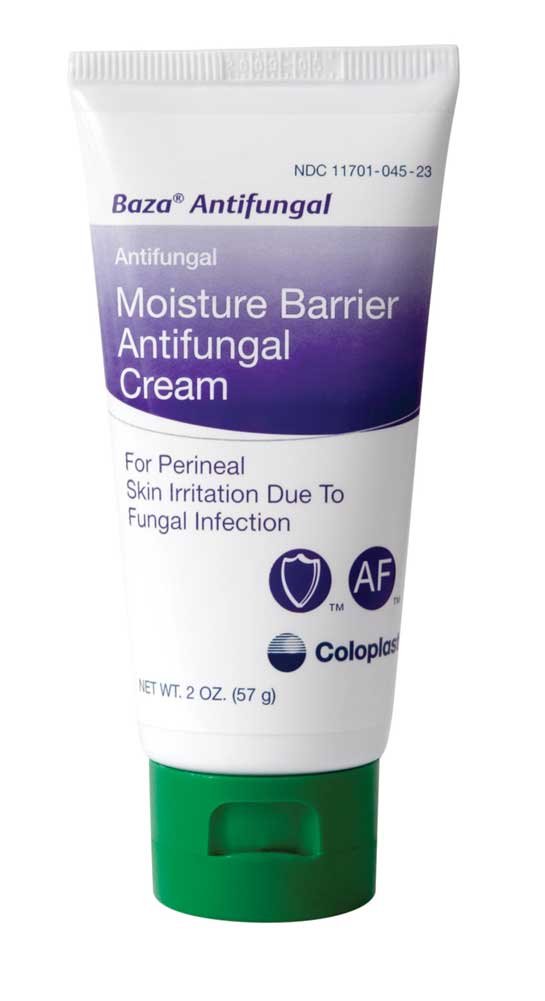
Effective Home Remedies and Prevention Strategies
What are the best ways to prevent and treat yeast infection diaper rash at home? Here are some effective strategies:
- Change diapers promptly and regularly, including at least once during the night
- Clean the diaper area gently with warm water and pat dry
- Allow the diaper area to air out for 5-10 minutes during diaper changes
- Apply a liberal amount of barrier cream, such as zinc oxide paste or petroleum jelly
- Avoid tight-fitting diapers and consider cutting elastic leg areas for better airflow
- Use gentle, scent-free soaps if necessary
- Avoid talc or cornstarch powders, which can trap moisture and worsen the infection
- Opt for alcohol-free, perfume-free, and propylene glycol-free baby wipes
- Practice proper hand hygiene before and after diaper changes
Antifungal Treatments for Yeast Infection Diaper Rash
When home remedies aren’t sufficient, antifungal treatments may be necessary. What are the options for treating yeast infection diaper rash? Healthcare providers may recommend:
- Prescription antifungal creams or ointments
- Over-the-counter antifungal medications like Lotrimin
- Anti-itch medications to alleviate discomfort
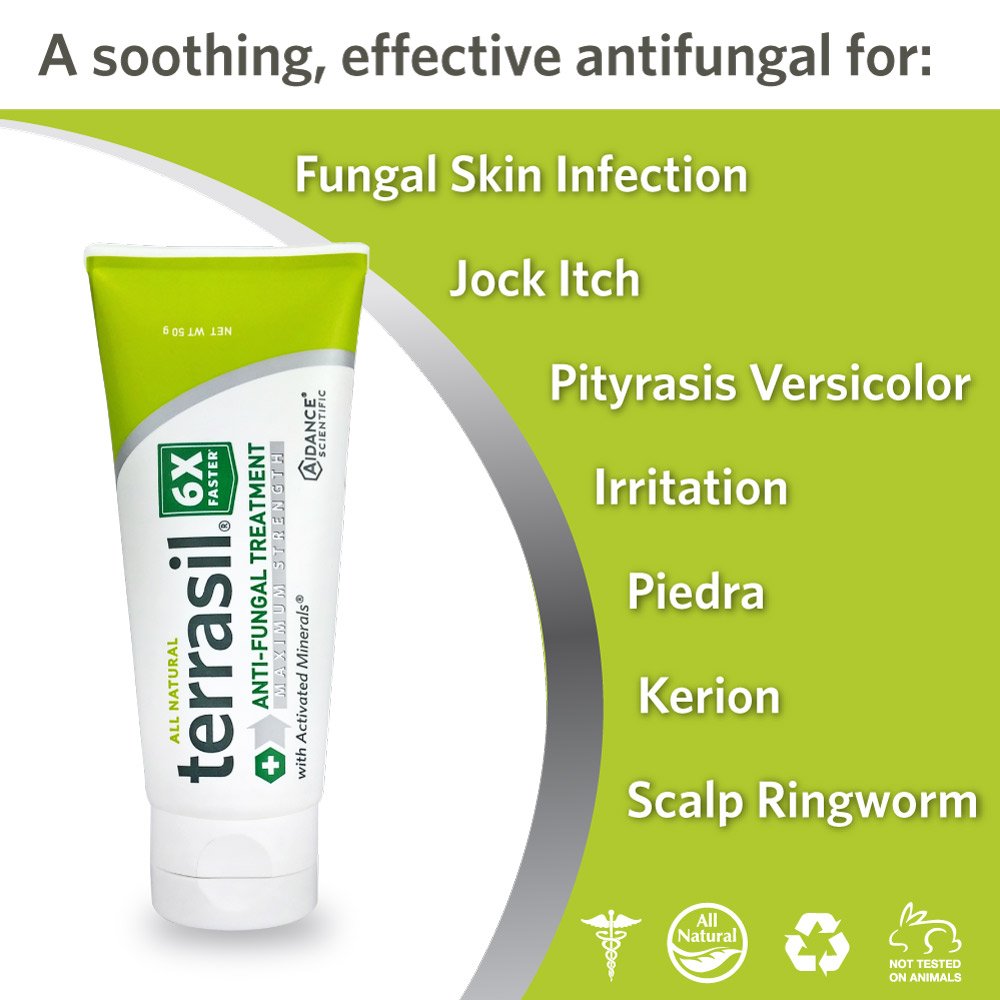
How long does it typically take for antifungal treatments to work? Most yeast infection diaper rashes should show significant improvement within three days of starting antifungal treatment. If the rash persists or worsens, it’s important to consult a healthcare provider for further evaluation.
When to Seek Medical Attention for Diaper Rash
While many cases of diaper rash can be managed at home, there are situations where professional medical advice is necessary. When should you call the doctor for a diaper rash? Consider seeking medical attention if:
- The rash persists for more than three days despite home treatment
- There’s no significant improvement after three days of antifungal medication
- The rash is worsening or spreading
- Signs of infection appear (sores, scabs, increased pain, swelling, warmth, redness, or red streaks)
- The baby develops a fever or becomes irritable
Potential Complications and Look-Alike Conditions
Are there conditions that can mimic or develop from diaper rash? Yes, several conditions can present similarly to diaper rash or arise as complications:
- Seborrheic dermatitis
- Impetigo
- Psoriasis
- Atopic dermatitis (eczema)
- Cellulitis
- Staph infection
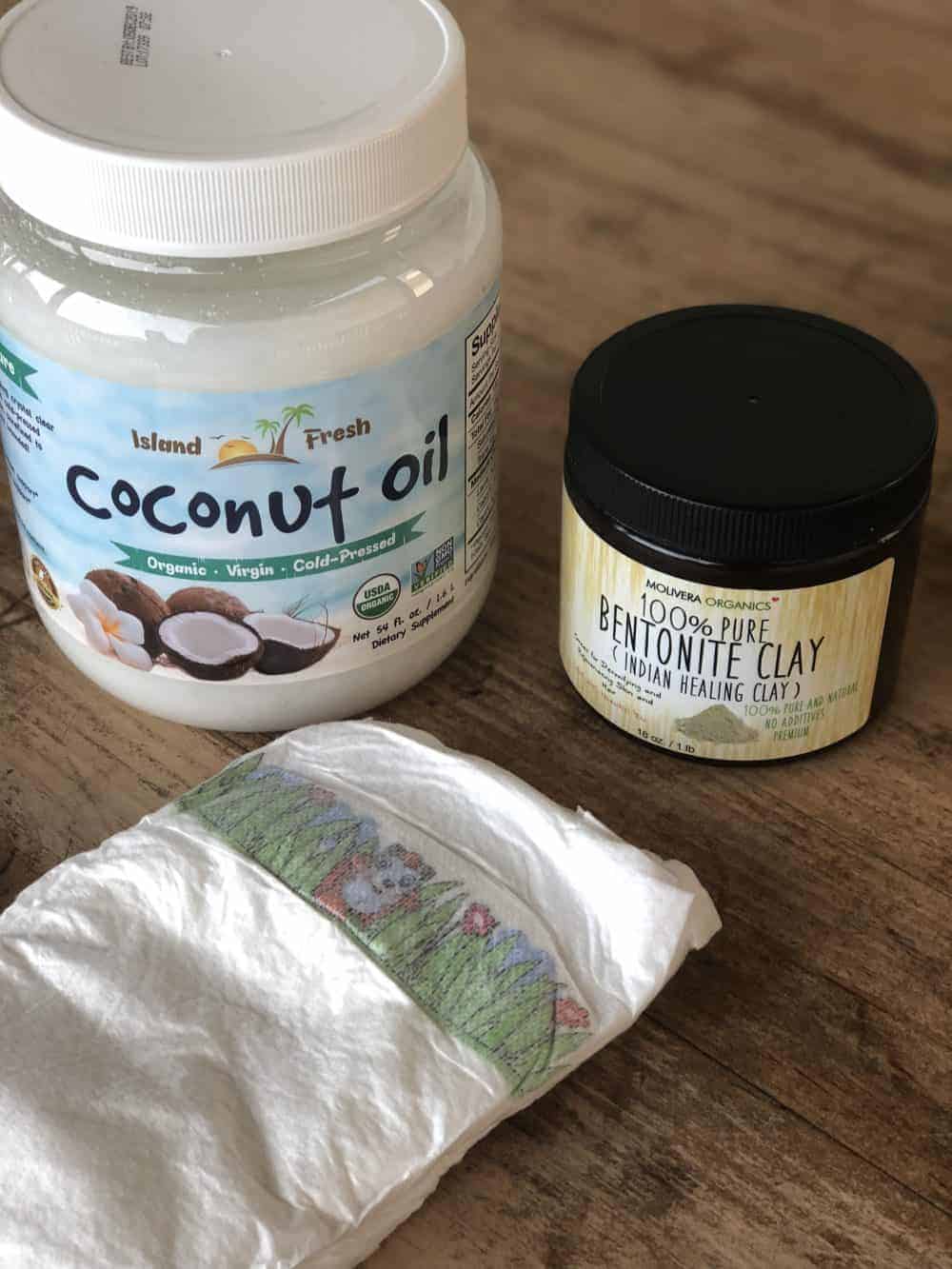
How can you differentiate these conditions from typical diaper rash? While some symptoms may overlap, these conditions often have distinct characteristics or occur in different areas of the body. If you’re unsure or concerned about your baby’s symptoms, it’s best to consult a healthcare provider for an accurate diagnosis.
The Role of Diet in Managing Yeast Infection Diaper Rash
Can dietary changes help prevent or manage yeast infection diaper rash? While there’s limited scientific evidence supporting dietary interventions for diaper rash, some parents and healthcare providers believe that certain dietary adjustments may be beneficial:
- Reducing sugar intake in the baby’s diet (if applicable)
- Introducing probiotic-rich foods or supplements (under medical supervision)
- Avoiding potential allergens that may exacerbate skin irritation
It’s important to note that any significant dietary changes should be discussed with a healthcare provider to ensure they’re appropriate and safe for your baby.
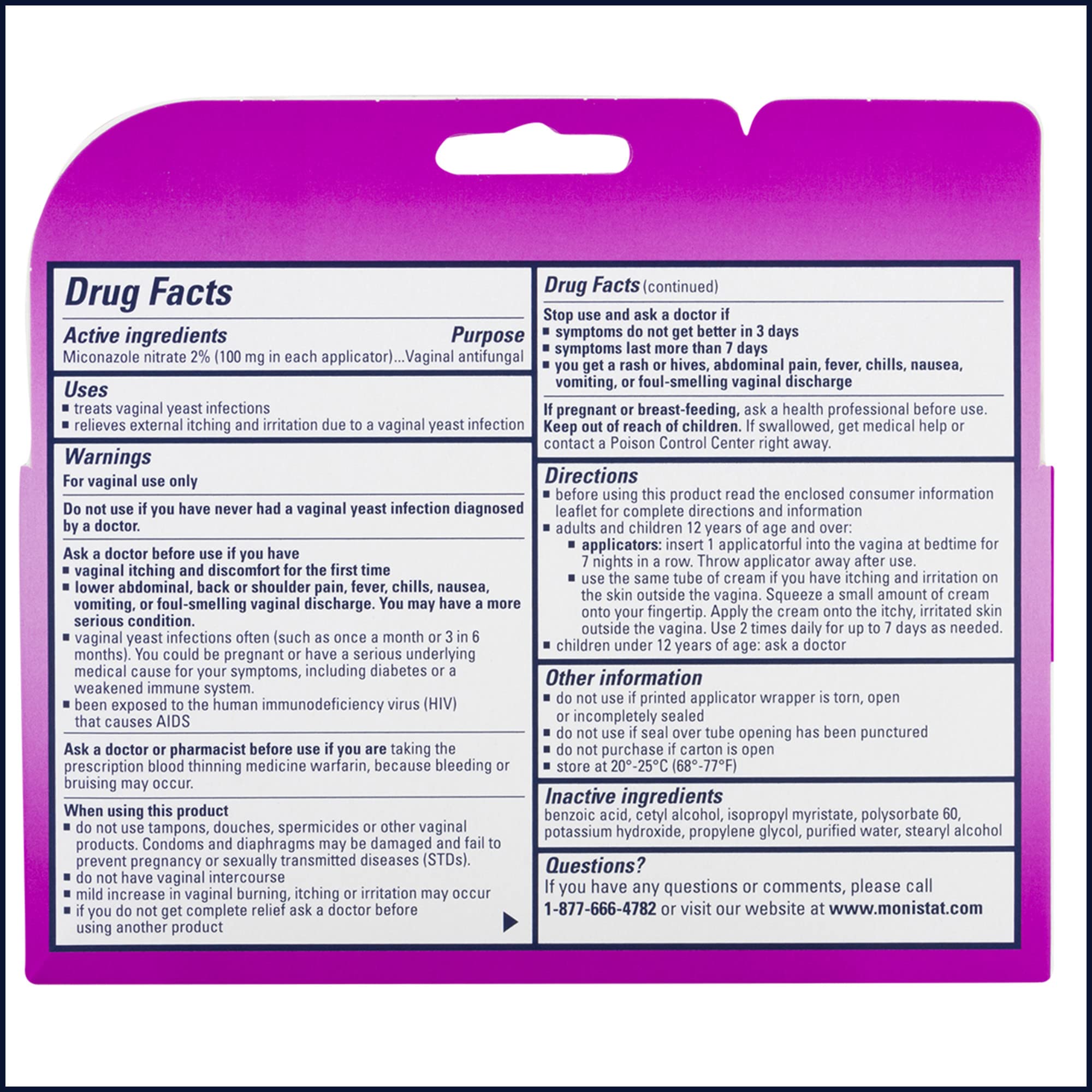
Natural Remedies for Yeast Infection Diaper Rash
Are there natural remedies that can help alleviate yeast infection diaper rash? While scientific evidence is limited, some parents report success with the following natural remedies:
- Coconut oil: Known for its antifungal properties
- Apple cider vinegar diluted in bathwater: May help balance skin pH
- Aloe vera gel: Can soothe irritated skin
- Calendula cream: Has anti-inflammatory properties
Always consult with a healthcare provider before trying any new treatments, especially natural remedies, to ensure they’re safe and appropriate for your baby.
The Impact of Diaper Types on Yeast Infection Diaper Rash
Does the type of diaper used affect the likelihood of developing yeast infection diaper rash? While research is inconclusive, some factors to consider include:
- Breathability: Diapers that allow better air circulation may reduce moisture buildup
- Absorbency: Highly absorbent diapers can help keep the skin drier
- Material: Some babies may be sensitive to certain diaper materials
- Fit: Properly fitting diapers can help prevent chafing and irritation
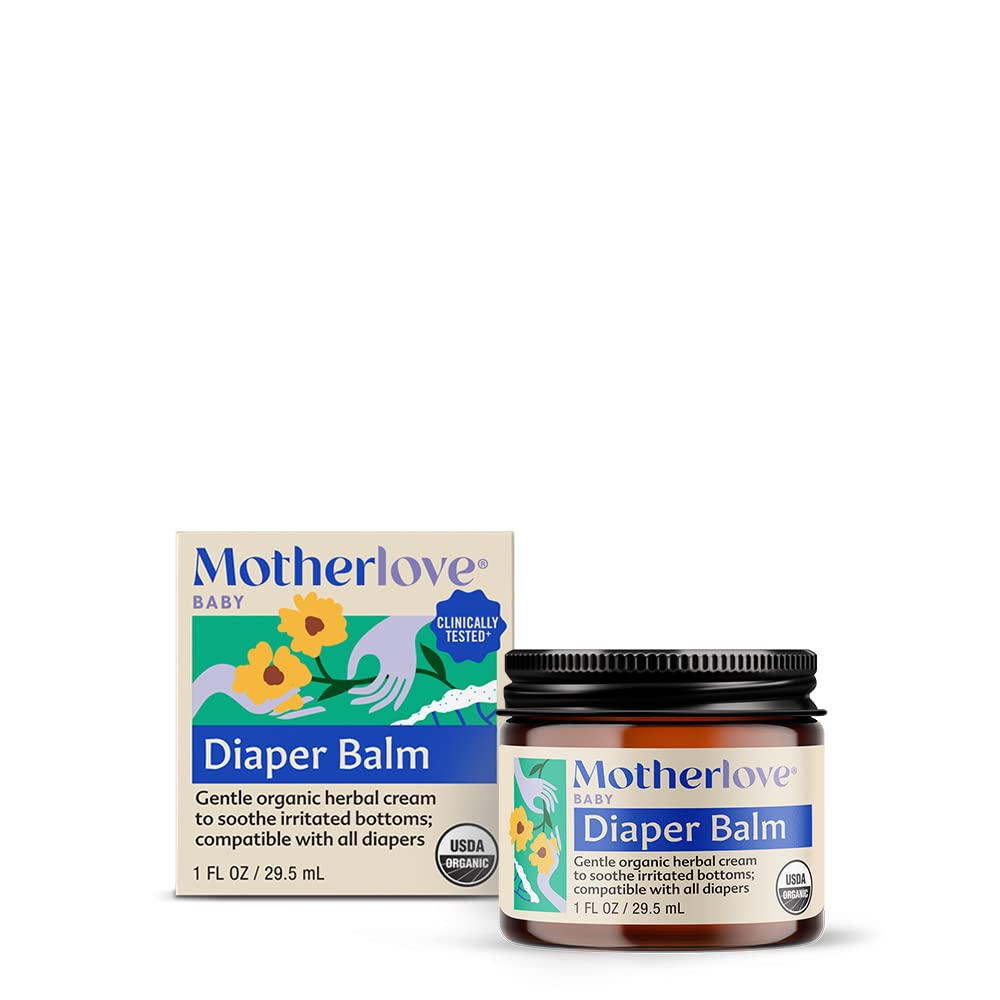
Experimenting with different diaper types and brands may help you find the best option for your baby’s skin.
Long-Term Prevention of Yeast Infection Diaper Rash
How can parents prevent recurrent yeast infection diaper rash? Implementing a comprehensive prevention strategy can help reduce the risk of future outbreaks:
- Maintain a consistent diaper changing routine
- Use high-quality, gentle skincare products
- Ensure proper hygiene practices for both baby and caregivers
- Monitor for early signs of skin irritation and address them promptly
- Consider periodic diaper-free time to allow the skin to breathe
- Keep the diaper area dry and clean at all times
By incorporating these practices into your daily routine, you can significantly reduce the likelihood of yeast infection diaper rash recurring.
The Psychological Impact of Diaper Rash on Babies and Parents
How does persistent diaper rash affect babies and their parents psychologically? Dealing with recurrent diaper rash can be challenging for both infants and caregivers:
- Babies may experience irritability, discomfort, and disrupted sleep patterns
- Parents may feel frustrated, anxious, or guilty about their baby’s discomfort
- The stress of managing persistent diaper rash can impact overall family dynamics

It’s important for parents to seek support and remember that diaper rash is a common issue that many families face. Consulting with healthcare providers and connecting with other parents can provide valuable emotional support and practical advice.
Innovative Approaches to Diaper Rash Prevention and Treatment
What new developments are emerging in the field of diaper rash prevention and treatment? Researchers and manufacturers are continually working on innovative solutions:
- Smart diapers with moisture sensors to alert parents when changes are needed
- Advanced barrier creams with improved protective properties
- Probiotic-based treatments to promote healthy skin flora
- Nanotechnology in diaper materials for enhanced absorbency and breathability
While many of these innovations are still in development or early stages of implementation, they represent promising advancements in diaper rash management.
The Role of Environmental Factors in Yeast Infection Diaper Rash
How do environmental factors contribute to the development of yeast infection diaper rash? Several external elements can influence the occurrence and severity of diaper rash:
- Climate: Hot and humid environments can exacerbate skin irritation
- Water quality: Hard water may affect skin pH and irritate sensitive skin
- Laundry detergents: Harsh chemicals can cause skin reactions in some babies
- Clothing materials: Synthetic fabrics may trap heat and moisture
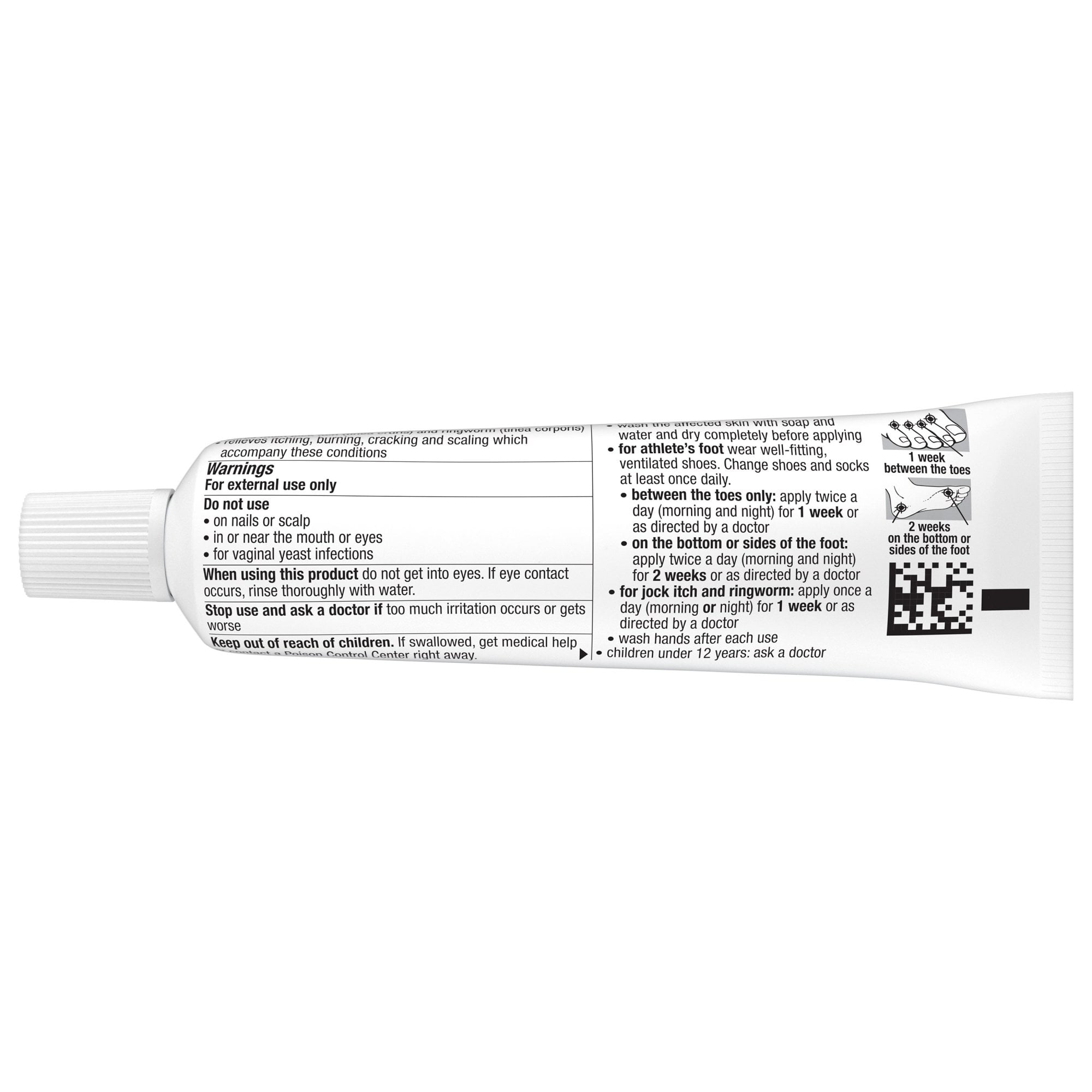
Being aware of these factors and making appropriate adjustments can help create a more skin-friendly environment for your baby.
Identify and Treat a Yeast Diaper Rash at Home
“Diaper rash” is a blanket term that describes diaper dermatitis, an inflammation in the diaper area. It can be caused by a number of factors including feces, ammonia (from urine and feces), diarrhea, yeast, bacteria, an irritant such as soap, and more seriously, cellulitis or staph infection.
A yeast diaper rash (candidiasis) is caused by an overgrowth of the fungus Candida albicans, which is naturally present in the intestinal tract and mucus membranes.
JGI / Jamie Grill / Getty Images
Identifying a Yeast Diaper Rash
A yeast diaper rash causes the skin in the diaper area to become bright red. Some defining characteristics of a yeast diaper rash include:
- Smaller patches that blend in with the bigger patches, or the entire diaper area may become red
- Raised borders that may have small bumps and pus-filled pimples
- Usually worse in the skin folds
- The scrotum or vulva may become very red and scaly
- Shiny appearance
- Skin may crack, ooze, or have sores present (severe cases)
While it is not usually painful, a yeast diaper rash can be itchy and irritating.
Candida albicans can also cause a yeast infection in the mouth called thrush. Oral thrush appears in white patches that look like milk curds, but when scraped off reveal a sore and reddened area.
| Symptoms of Diaper Rash by Type | |||
|---|---|---|---|
| Yeast | Irritant | Bacteria | Allergy |
| Bright red May cover entire diaper area May have raised borders, small bumps, pus-filled pimples Worse in skin folds May have shiny appearance | Pink or red patches on the skin in the diaper area Skin folds less affected (protected from feces and urine) | Bright red skin around the anus Yellow crusting, weeping, or pimples | Rash in the area that a certain product is used or applied (wipes, soaps, etc.) |
Source: American Academy of Pediatrics
How Yeast Causes Diaper Rash
Candida albicans occurs naturally in the bodies of healthy people.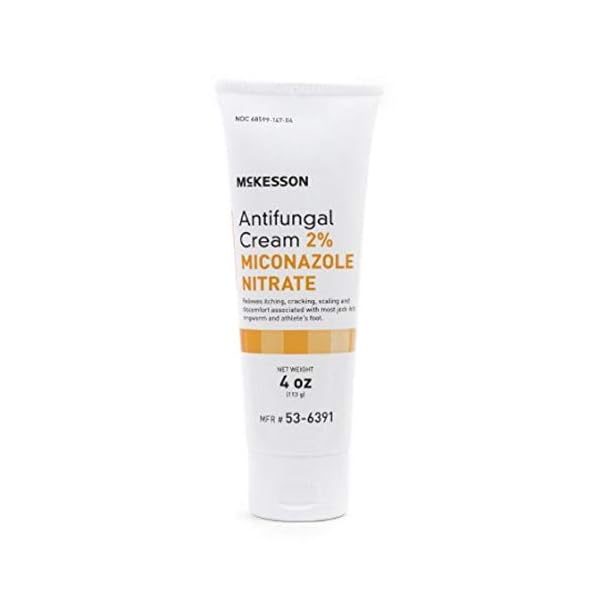 Yeast diaper rashes are not contagious to other people and occur due to an overgrowth of this naturally occurring fungus.
Yeast diaper rashes are not contagious to other people and occur due to an overgrowth of this naturally occurring fungus.
Candida albicans thrives in warm, moist areas, like in the folds of skin and in the area covered by a diaper.
Yeast diaper rashes are more likely to occur:
- When the diaper area is not kept clean and dry
- If the baby is on antibiotics
- If the nursing parent is on antibiotics
- If the baby has frequent bowel movements
It is possible to have more than one type of diaper rash at a time. If a diaper rash is not getting better with typical treatments, it is likely yeast is present as well.
Conditions That Can Mimic Diaper Rash
Some conditions can develop from or mimic diaper rash. These include:
Prevention and Home Remedies
The best ways to prevent and treat most diaper rashes include:
- Change the baby’s diaper promptly and regularly.
- Thoroughly clean the diaper area with a warm, damp cloth and pat dry.
 Make sure there are no feces in “hidden” places such as the skin folds of the legs or under the scrotum.
Make sure there are no feces in “hidden” places such as the skin folds of the legs or under the scrotum. - Don’t rub the diaper area when cleaning; pat or clean gently. Use a squirt bottle of water if necessary.
- Change the baby’s diaper at least once during the night.
- Don’t put the diaper on tightly. If necessary, cut the elastic legs of a disposable diaper in a few areas to allow air to reach the baby’s skin.
- If using soap, make sure it is gentle and scent-free.
- Don’t over-clean affected areas.
- Liberally apply topical barriers such as zinc oxide paste or petroleum jelly to clean, dry skin to keep urine and feces away from the skin.
- Do not use powders such as talc or cornstarch, which trap moisture in and can make the yeast infection worse. Talc is also harmful to the baby’s lungs.
- Let the diaper area air out by keeping the diaper off for five or ten minutes during change time (after cleaning and before putting on a new diaper) or allowing the baby to have diaper-free play time periodically.

- Avoid baby wipes that contain alcohol, perfume, or propylene glycol.
- Wash hands before and after every diaper change.
In addition to these practices, a yeast diaper rash is treated with topical antifungal treatments.
The baby’s healthcare provider may prescribe a cream or ointment, or they may recommend an over-the-counter medication such as Lotrimin. They may also prescribe or recommend an anti-itch medication.
When to Call the Doctor
If a diaper rash has lasted more than three days with at-home remedies, it is likely a yeast diaper rash and may require antifungal treatments. A healthcare provider can confirm this diagnosis and recommend treatment.
Contact a healthcare provider if:
- The rash isn’t getting a lot better after three days of using antifungal medication
- The rash is getting worse
- The rash shows signs of infection (sores, scabs, increased pain, swelling, warmth, redness, red streaks leading from the rash, pus drainage)
- A fever develops
- There is unusual or foul-smelling drainage in the affected skin areas
- The baby is fussier than usual, or is crying a lot and is difficult to soothe
- New symptoms develop, such as blisters, open sores, raw skin, or bleeding
- The rash spreads outside of the diaper area, such as the abdomen, back, arms, or face
- The baby is less than six weeks old and has a rash
- The baby is having recurrent yeast diaper rashes
- You think your baby needs to be seen by a healthcare professional
What Types of Diaper Rash Need Medical Attention?
Rarely, diaper rash can have serious complications such as cellulitis or staph infection.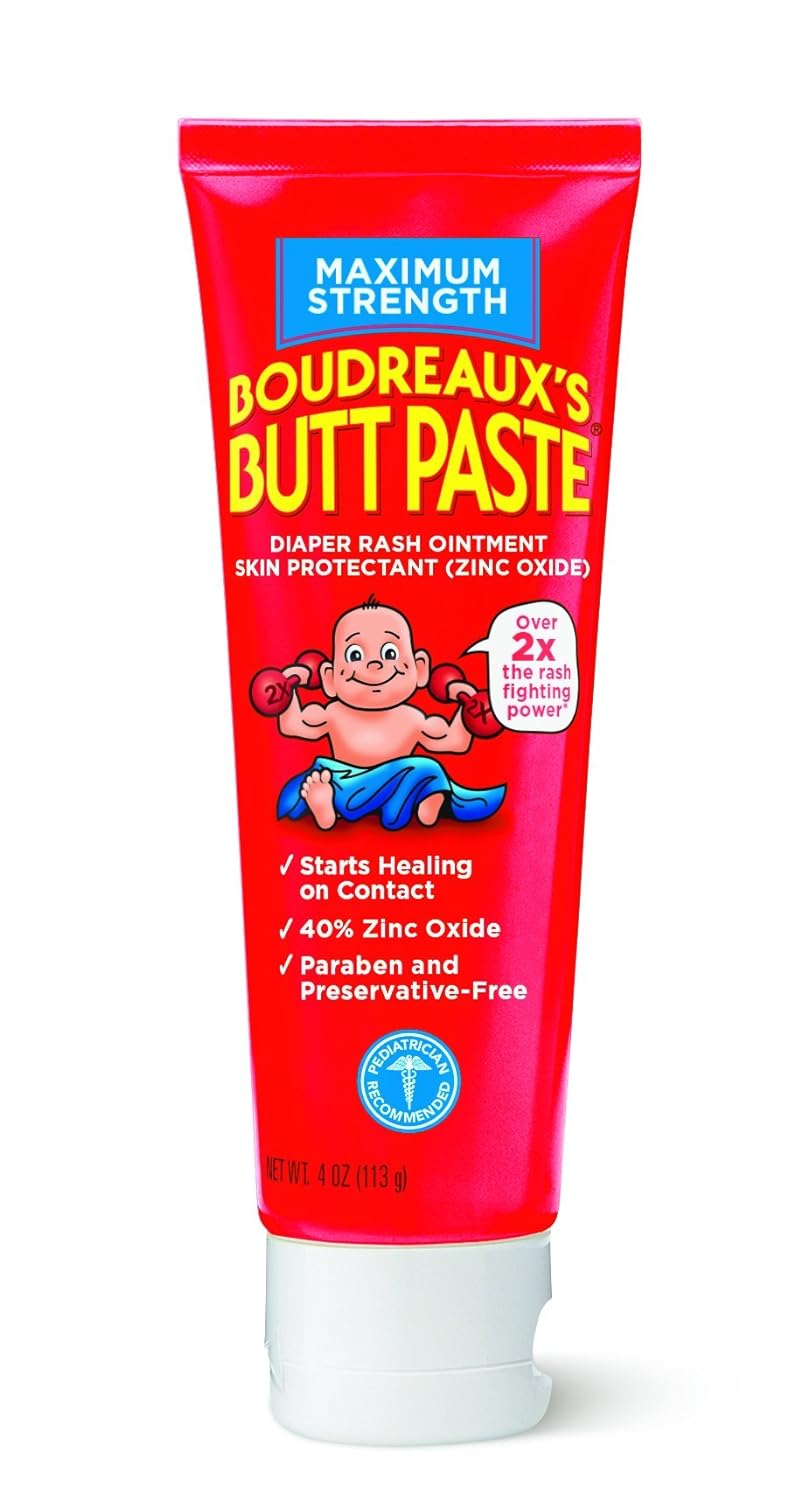
If you suspect your child has a bacterial diaper rash, see a healthcare professional to get a proper diagnosis and treatment plan.
If your child shows any signs of infection, seek medical care promptly.
A Word From Verywell
Yeast diaper rashes are uncomfortable for babies and concerning for parents. Thankfully, they are rarely serious and can often be prevented.
If a yeast diaper rash does arise, it can be successfully treated with good hygiene practices, over-the-counter creams and ointments, and antifungal medication.
Thanks for your feedback!
Sign up for our Health Tip of the Day newsletter, and receive daily tips that will help you live your healthiest life.
Sign Up
You’re in!
Thank you, {{form.email}}, for signing up.
There was an error. Please try again.
What are your concerns?
Other
Inaccurate
Hard to Understand
Verywell Health is part of the Dotdash publishing family.
Tips For Treat And Preventing A Baby Yeast Infection
Ruben Earth/Getty
Your baby’s precious bottom is red and angry, and no matter how much cream you slather on and it’s not getting any better. Pee pees bring painful screeches, and you are officially out of ideas to make it stop. Chances are you are dealing with a yeast diaper rash, the pesky, persistent cousin of the run-of-the-mill baby butt rash. We’ve been there, Mama. Anyone who wears a diaper can get a yeast diaper rash, including babies and toddlers. And in most cases, a yeast rash is no biggie if you know how to identify a fungal diaper rash and use the proper treatment.
If you’re beating yourself up because your baby has a yeast diaper rash, know that between a quarter and a half of all babies get some type of diaper rash. Of those, between 15 and 50 percent are due to yeast. It’s really common.
If your little one is howling in pain and you need some tips and answers now, here’s what you need to know.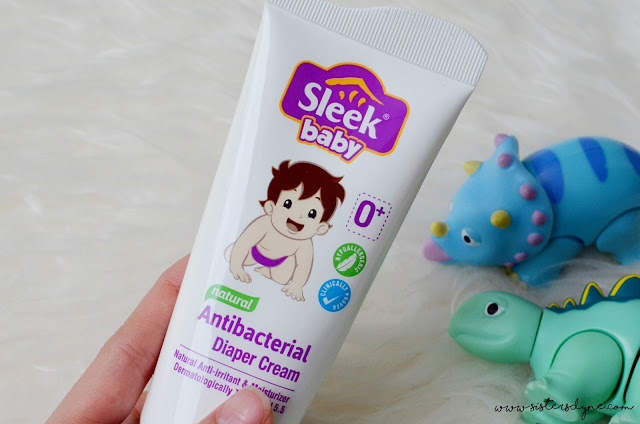
How do I know if my baby has a yeast diaper rash?
Yeast diaper rash is caused by the same candida yeast that gives babies thrush. Candida is all over our skin, our digestive system, and nether regions, but candida can overgrow when things get out of whack and cause trouble. So first, if the baby is already dealing with thrush, that’s a good clue the diaper rash is yeast-fueled. And nursing mothers on antibiotics are not just at risk of yeast infections themselves, babies drinking the breastmilk might feel some of the same effects. So if antibiotics are in the baby’s system, they may be more susceptible to a fungal diaper rash.
Heads up, if you think your baby has thrush, they can pass it back to you; nipple thrush is a thing. Sorry!
What does a yeast diaper rash look like?
Regular diaper rash is smooth, has the appearance of chapped skin, is isolated in the general diaper area, and goes away after a few passes with diaper rash cream.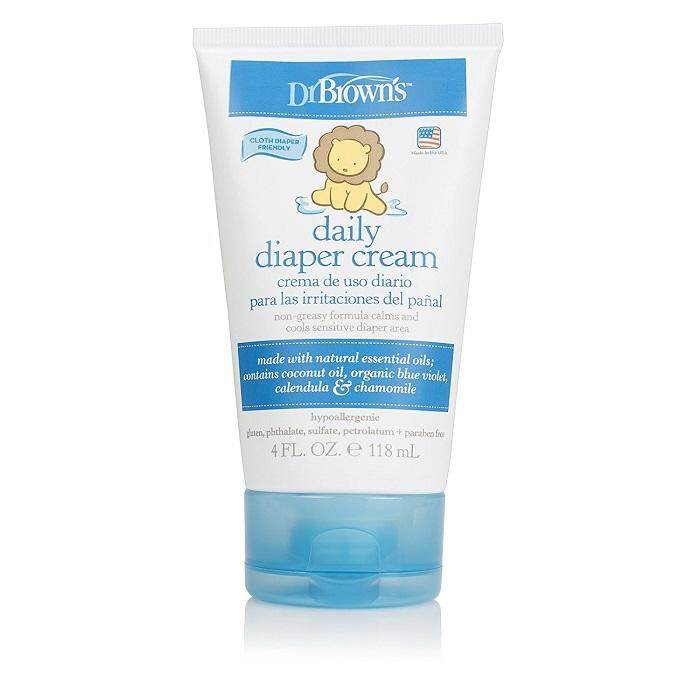 A yeast infection rash will typically have raised sores that look like little pimples and will be located in the folds of the skin rather than on the smooth flat areas like butt cheeks.
A yeast infection rash will typically have raised sores that look like little pimples and will be located in the folds of the skin rather than on the smooth flat areas like butt cheeks.
— Baby girl yeast diaper rash: A baby girl’s yeast rash will tend to concentrate on the vulva and, like any other itchy, burning vaginal yeast infection, might produce some yellowish discharge.
— Baby boy yeast diaper rash: A baby boy’s yeast infection might cause scaling, redness, or a rash on the penis.
Candidiasis yeast overgrowth could also cause patches that ooze clear fluid, cracks or fissures around the corners of the mouth or swelling, pain, or even pus coming out of the nail beds, per the University of Rochester Medical Center.
How do you treat a yeast diaper rash?
Number one: you know your baby better than anyone else. If they start running a fever or if the rash keeps getting bigger, take them to see the pediatrician and get a prescription.
If you’re looking for a topical, at-home fix, even the best diaper rash cream won’t help. It would be best if you had an antifungal like Clotrimazole antifungal cream, the active ingredient in Lotrimin, Monistat Derm (which contains miconazole micatin), and Mycostatin with nystatin, which you can find at the pharmacy. Some of these options can be found in the “athlete’s foot” section. Athlete’s foot is a fungus, too, along with ringworm. It goes without saying you should always consult with your pediatrician before using any over-the-counter creams. You should also make sure the baby’s tender skin can tolerate the cream before applying. You should start to see improvement after a couple of days. If not, head to the pediatrician.
While treating fungus with creams, remember those itchy little buggers love warm, dark, moist places — like diapers. Give baby a thorough bath to clean the rash, and then make sure you dry their little undercarriage completely before putting a diaper back on them.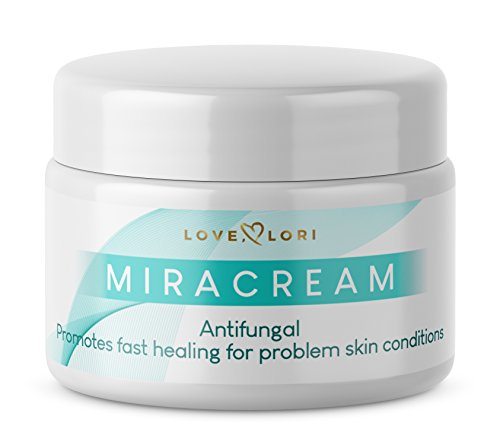
Better yet, lose the diaper altogether and let their little bum breathe for the ultimate free spirit treatment. Open air and sunlight are fungus Kryptonite. When going commando isn’t an option, make sure to keep diaper changing on the reg to keep things dry and clean while that precious tooshie heals.
How to prevent yeast diaper rash?
The best way to keep your baby safe from yeast diaper rash is to keep their bottoms dry and well taken care of. Here are a few tips to protect your baby and their booties.
- Bathe your child in warm water.
- After changing the baby, allow their bottoms to air dry before putting another diaper on them.
- Give your baby some diaper-free time!
- Try to stay on top of their changing schedule. Don’t leave your baby in a dirty diaper for too long.
- Use diaper cream on your baby’s bottom to protect them from their excretions, which can cause rashes.
- In addition to wiping your baby, clean them with water during diaper changes.

- Avoid putting their diapers on too tight. Make sure they have breathing room down there.
- Invest in super absorbent diapers to keep your baby’s skin as dry as possible.
- If your child uses cloth diapers, when you wash and dry them avoid using fabric softeners or dryer sheets.
- When wiping your little one during diaper changes, don’t use baby wipes that are heavily scented with perfumes.
- Make sure you wash your hands before and after each diaper change.
- Avoid putting your baby in rubber bottoms because it traps moisture in the skin.
Are there yeast diaper rash home remedies?
If you want to use natural remedies for your baby’s bottom there are a few options you can try. But before using any of these home solutions, run them by your doctor first.
- Try dabbing the area with breast milk. It has anti-infective qualities and antibodies, which can help reduce irritation.
- Make your own antifungal cream by mixing olive oil, shea butter, coconut oil, and zinc oxide.
 This will help soothe any soreness.
This will help soothe any soreness.
10 Best Diaper Rash Creams (2021 Reviews)
At least half of all babies get a diaper rash at some point. Rashes and infections can be incredibly painful for babies, and make diaper changes far more unpleasant than they need to be.
They are a source of endless headaches for mothers too.
The good news? Diaper rash cream can help to heal existing rashes and prevent ones from starting.
We’ve rounded up the best diaper rash creams to help protect your little one’s tushie.
Image
Model
Product Comparison Table
Features
Best Maximum Strength
Desitin Maximum Strength
- Maximum strength
- 12 hour relief
- Treats and prevents
Best for Cloth Diapering
Earth Mama Angel Baby
- Free of allergens
- All-natural formulation
- Antibacterial & antifungal properties
Best for Diarrhea
Aquaphor Baby
- Multiple uses
- Provides excellent moisture barrier
- Promotes skin healing
Best for Toddlers
Boudreaux’s Butt Paste
- Protects and treats
- Economical
- Developed by a pharmacist
Best for Infants
Burt’s Bees Ointment
- 100% natural
- Paraben-free
- Offers barrier protection & skin conditioners
Best All Natural
Babo Botanicals
- Support fair trade
- Organic
- All natural ingredients
Best Orgnaic
The Honest Company
- Organic ingredients
- Plant based
- Hypoallergenic
Best for Open Sores
Weleda Diaper Cream
- Contains zinc oxide
- Has anti-inflammatory calendula
- No synthetic preservatives
Best Antifungal
Baza Moisture Barrier
- Gives a moisture barrier
- Antifungal
- Multifunctional product
Best for Eczema
A&D Diaper Ointment
- Very effective
- Provides strong moisture barrier
- Oil-based
Why You Need Diaper Rash Cream
Diaper rash is a skin irritation in your child’s diaper area.
Sometimes it’s simply a red, irritated patch on your baby’s bottom that causes them no apparent discomfort. Other times it can be severe, spreading to their thighs or torso and causing pain. In extreme cases, the skin can bleed or become infected.
Diaper rash cream can help to both heal your child’s bottom from an existing rash, and prevent one from starting.
The right cream acts as a protective barrier between your baby’s bottom and potential irritants. Some also have soothing ingredients to calm inflammation and heal irritation.
The Causes of Diaper Rash
There are many different causes of diaper rash:
- Moisture: Your child’s diaper is a warm, moist place and even though diapers do their best to wick that moisture away from their skin, their bum is never 100 percent dry. There’s always moisture against your baby’s skin, causing potential irritation (1).
- Stool: When your baby’s urine mixes with their stool, it causes a chemical reaction that creates ammonia.
 Ammonia is harsh on the skin and can irritate it. If you are a cloth diaper user, it is important to keep cloth diapers ammonia-free.
Ammonia is harsh on the skin and can irritate it. If you are a cloth diaper user, it is important to keep cloth diapers ammonia-free. - Diarrhea: There’s additional acid in your child’s diarrhea — combine that with the extra moisture and the ammonia, and you’ve got a recipe for diaper rash.
- Foods: The introduction of new foods into your baby’s diet changes the chemical composition of their stool and can irritate their tender skin. Depending on the food it may also introduce more acid into the diet, which is also an irritant when it comes out in your baby’s diaper. It’s important to note that if your child gets a diaper rash from a type of food, it doesn’t necessarily mean they’re allergic to that food. Watch for other signs of allergy in your child and talk to your doctor if you have concerns.
- Chemicals: Disposable diapers have chemicals, dyes, and perfumes to help trap the moisture and keep it from smelling. Even “natural” diapers have some chemicals in them.
 If your child is repeatedly getting diaper rashes, you may need to switch to a dye-free or natural diaper for sensitive skin, or consider switching to cloth.
If your child is repeatedly getting diaper rashes, you may need to switch to a dye-free or natural diaper for sensitive skin, or consider switching to cloth. - Detergents: If you use cloth diapers, your baby may be reacting to the detergent you use to wash them. You may want to consider switching brands, changing to a detergent without dyes or perfumes, or adding an extra rinse or two to your wash routine.
- Antibiotics: Antibiotics kill bacteria that are causing illness in your child – but they also kill the healthy bacteria in your child’s digestive system. This can cause them to get diarrhea or a yeast infection, both of which cause diaper rash.
- Yeast: Most diaper rashes are caused by topical or chemical skin irritation and are treated with over-the-counter diaper rash creams. Yeast rashes are the result of yeast (technically a fungus, but often mistakenly referred to as a bacteria) growing in your child’s diaper area and they are particularly stubborn.
 Yeast loves warm, moist environments — i.e., your baby’s diaper. Yeast infections need to be treated with an antifungal product, often on prescription (2).
Yeast loves warm, moist environments — i.e., your baby’s diaper. Yeast infections need to be treated with an antifungal product, often on prescription (2).
Pro Tip
If you use cloth diapers and your child gets a yeast rash, you’ll need to go through some extra steps to kill the yeast living in the fibers of your diapers. Your regular wash routine won’t kill them. Switch to disposable diapers temporarily while you battle your baby’s yeast rash and treat your cloth diapers to prevent a recurrence of yeast.
Types of Diaper Rash Products
There are several on the market, depending on your needs.
Creams
Creams are water-based, making them easy for the skin to absorb and easy to spread. They’re best for soothing irritated skin.
Pastes
Pastes are thick products that protect your baby’s skin, and typically contain zinc oxide and skin conditioners. They can stain clothing and aren’t recommended for cloth diapers (unless you use a disposable liner) as they’re difficult to wash out of fabric.
Ointments
Ointments are oil-based products. Being oily and greasy, they sit on top of your child’s skin, providing a good barrier against irritants.
Powders
While baby powder is advertised as able to absorb moisture, it’s not recommended as the fine powder becomes airborne and is easily inhaled by your little one. It’s also often made of cornstarch, which provides a food source for yeast and exacerbates any rashes or infections.
How to Choose a Diaper Rash Cream
When choosing a diaper rash cream, consider the following:
Type of Rash
If your child has an irritated bottom, choose a traditional diaper cream or ointment. If they have a yeast rash, you’ll need an antifungal cream, as regular products won’t help.
Cream, Paste, or Ointment
If you’re using a product as a preventative measure, an ointment may be your best bet. If you’re healing an existing rash, cream may soothe the skin. And if your baby has a particularly severe rash, an ultra-thick paste may both heal the skin and protect it.
Cloth or Disposable Diapers
If you use disposable diapers, you don’t have to worry about diaper creams affecting their performance. If you use cloth, however, some ingredients in creams or ointments can clog the fibers and make them less absorbent. If you use cloth, choose diaper creams without the petrolatum or zinc oxide. You may also want to use a disposable liner.
Ingredients
Many diaper creams and ointments contain ingredients that have the potential to be irritants. If your child has a sensitivity, check the label for potential allergens such as lanolin, mineral oil, coconut oil, beeswax, and sunflower oil.
The Best Diaper Rash Creams of 2021
Here are the top diaper rash creams on the market.
1. Desitin Maximum Strength Baby Diaper Rash Cream
Best Maximum-Strength Diaper Rash Cream
This hypoallergenic formula is paraben, phthalate, dye, and soap-free. Dermatologically and pediatrician tested, it’s a gentle option for daily use.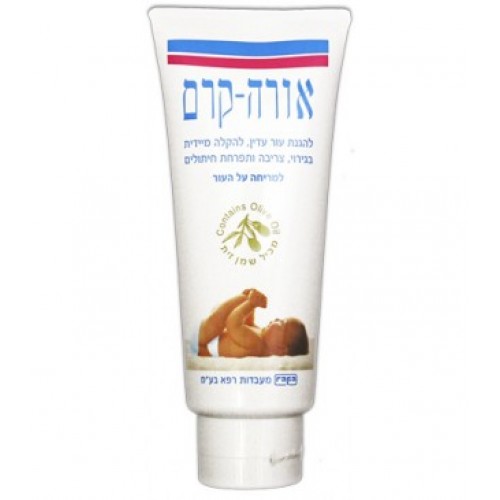
However, it still uses maximum strength to effectively treat diaper rash. It’s made with 40% zinc oxide to treat and even prevent diaper rash discomfort.
This is a fantastic option for overnight use as it can provide relief for up to 12 hours. So if your little one is waking up in pain during the night, we recommend trying this.
Pros
- Hypoallergenic.
- Maximum strength.
- 12-hour relief.
- Treats and prevents.
Cons
- Very thick so it’s hard to spread.
- Strong bad smell.
2. Earth Mama Organic Diaper Balm
Best Diaper Rash Cream for Cloth Diapers
Finding a diaper cream with neither zinc oxide or petrolatum is near impossible, but this one fits the bill. Made of completely natural ingredients that should rinse out of your diaper completely, it offers your baby’s skin wetness protection while still allowing it to breathe.
It also contains antibacterial and antifungal herbs, which means it may help prevent and treat yeast rashes should they occur.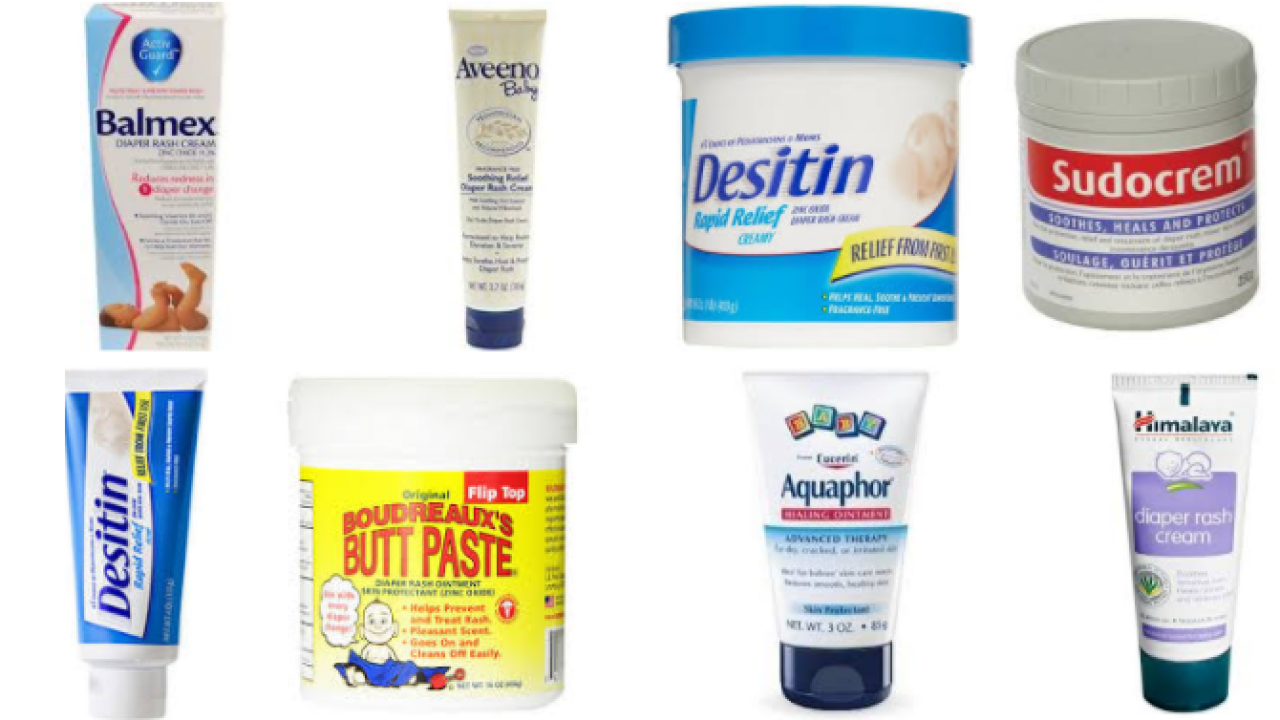 It’s been clinically tested and dermatologist approved, and is free of some of the most common allergens including lanolin, mineral oil, beeswax, and petroleum.
It’s been clinically tested and dermatologist approved, and is free of some of the most common allergens including lanolin, mineral oil, beeswax, and petroleum.
Pros
- Free of many allergens.
- All-natural formulation is also great for sensitive skins.
- It can safely be used on cloth diapers.
- It has antibacterial and antifungal properties.
Cons
- A little on the expensive side.
- Some reviewers found the smell to be too strong.
3. Aquaphor Baby Healing Ointment for Diaper Rash
Best Diaper Rash Cream for Diarrhea
This thick, greasy ointment is easy (and painless) to apply and wipe off, and will provide a solid moisture barrier between your baby’s skin and the contents of their diaper.
Aquaphor ointment also contains panthenol and glycerin which help to moisturize and nourish the skin, promoting healing if their bum is irritated.
Aquaphor is widely recommended by dermatologists for help with a wide variety of skin issues, but this line was specifically formulated with babies’ unique skin needs in mind.
Parents find it to be very effective in treating and preventing diaper rash, but it can also be used for other skin issues such as eczema, chapped skin, and protecting cuts and scrapes.
Pros
- It has multiple uses.
- Provides an excellent moisture barrier.
- Helps promote skin healing.
Cons
- It contains petrolatum.
- It contains potential allergens.
- Some parents may find it feels too greasy.
4. Boudreaux’s Butt Paste Diaper Rash Ointment
Best Diaper Cream for Toddlers
Developed by a father who happened to be a pharmacist, this simple paste treats your baby’s diaper rash with only six ingredients, so you know they’re not being exposed to strange chemicals.
It’s comprised primarily of zinc oxide, leaving a thick barrier between your baby’s bottom and potential irritants. The additional ingredients help to soothe baby’s skin without any strong or medicinal scents. Finally, not only will it prevent against further irritation, but it helps heal existing ones.
Finally, not only will it prevent against further irritation, but it helps heal existing ones.
Pros
- Protects and treats.
- It’s thick for maximum coverage; this also makes it economical since you don’t need much.
- It was developed by a pharmacist.
Cons
- Contains petrolatum.
- It isn’t appropriate for cloth diapers.
5. Burt’s Bees Baby Diaper Rash Ointment
Best Diaper Cream for Infants
Burt’s Bees has a great reputation for high-quality and gentle products, and their diaper rash ointment is no different. It’s safe for use on your baby’s bum with 100 percent natural ingredients and no parabens, phthalates, or petrolatum.
Made of 40 percent zinc oxide, it locks out any moisture that could irritate your baby’s skin, but also has natural conditioners to nourish at the same time. It’s been tested by pediatricians so you can be assured it’s gentle on your baby, and also has a pleasant scent that won’t make you think of medicine.
Pros
- 100 percent natural.
- It’s paraben-free.
- It offers barrier protection and skin conditioners.
Cons
- Contains beeswax and lanolin, which are allergens for some babies.
- Not very thick.
6. Babo Botanicals Natural Diaper Rash Cream
Best Natural Diaper Rash Cream
This cream is made entirely of natural products — there’s absolutely nothing synthetic here — and it was developed on a certified organic farm so you can be sure that what goes onto your baby’s skin is as safe as possible.
It has zinc oxide as a moisture barrier, but also contains anti-inflammatory extracts to help soothe your baby’s bottom. And since it’s manufactured in small batches, they keep the quality high as opposed to mass-manufacturing where quality can be diminished.
Pros
- They support fair trade.
- Organic.
- Quality, all-natural ingredients.
Cons
- It’s expensive.
- Some of the ingredients are potential allergens.
7. The Honest Company Diaper Rash Cream
Best Organic Diaper Rash Cream
This plant-based diaper cream is made with organic ingredients, so you know it’s as natural as possible. The zinc oxide not only forms a barrier to protect your baby’s bottom but also works to reduce inflammation on the skin that’s already irritated.
It’s certified by the NSF — which means it meets strict health and safety standards — and has been tested by physicians. It’s kind to your baby’s skin, fragrance-free, and is made without parabens, mineral oil, lanolin, or dyes.
Pros
- Made with organic ingredients.
- Plant based.
- It doesn’t contain the most common allergens.
- Hypoallergenic.
Cons
- The coconut oil may irritate some babies.
- Some reviewers claimed the product separated.
8. Weleda Diaper Cream with Calendula
Best Diaper Rash Cream for Open Sores
Weleda developed this cream with the help of midwives, so you know that they care about making products that actually work. As a bonus, this is certified “natural” by the European organization NaTrue.
The cream is 12% zinc oxide to offer protection, with calendula extract and other natural ingredients to soothe your baby’s extra-irritated bottom.
It contains no synthetic preservatives or fragrances and replaces traditional mineral oil with beeswax. There are also several other ingredients to further nourish your baby’s soft skin as it heals.
Pros
- Natural product.
- It contains zinc oxide.
- Has anti-inflammatory calendula.
- No synthetic preservatives.
- Fragrance-free.
Cons
- It contains beeswax and lanolin (potential allergens).
- High number of ingredients.
9. Baza Moisture Barrier Antifungal Cream
Best Antifungal Diaper Rash Cream
Though this cream wasn’t developed specifically for babies, many parents have used it instead of diaper cream for their children who are battling yeast.
It contains petrolatum, which will form a barrier between your baby’s skin and diaper wetness, and also an antifungal ingredient which will help to eliminate their yeast growth.
Because diaper creams don’t come formulated with an antifungal, you will need to check with your doctor before using this product on your baby — just to make sure they give you the go-ahead. But once they do, this is nice to have in your medicine cabinet because you can use the diaper cream to heal fungal infections in the whole family.
Pros
- It provides a moisture barrier.
- It has an antifungal to help with yeast.
- Multifunctional product.
Cons
- Not specifically approved for babies.
- It contains synthetic products.
10. A&D Diaper Rash Ointment
Best Diaper Cream for Eczema
Nothing offers barrier protection quite like oil-based ointments, and at 53 percent petrolatum, this will keep all irritants off your baby’s already-irritated skin. It also contains lanolin, which is designed to help treat and heal your baby’s diaper rash.
Because it’s oil-based, it’s easy to apply to your baby’s skin and won’t cause them discomfort as you try to spread it across their sore diaper area. The same is true when you clean it later — because it’s not a thick paste, it wipes off easily, so you don’t have to scrub your baby’s poor tushie.
Pros
- Very effective.
- It provides a strong moisture barrier.
Cons
- Contains a fragrance.
- Contains potential allergens.
- Petrolatum is a synthetic product.
The Bottom Line
Our top pick for the best diaper cream is the Desitin Maximum Strength Baby Diaper Rash Cream. Not only is hypoallergenic, maximum strength, and free from nearly all the major potential allergens, but it can be used on whatever type of diaper you choose and even has antifungal properties that may help you battle, or prevent yeast.
It can be tricky to find the right diaper cream for your little one, so when you finally find one that works, you’ll be loyal to it for the whole of your parenting career.
Reviewed by
Mary Sweeney, BSN, RN, CEN
Mary Sweeney, BSN, RN, CEN is an oncology nurse navigator and freelance medical writer. Mary has 4 years of experience as an officer in the Navy Nurse Corps. including emergency/trauma, post-anesthesia, and deployment medicine.
7 home remedies for diaper rash
Of all the potential ailments your baby may suffer from, diaper rash is one of the most common. Diaper rash, or diaper dermatitis, is one of the most common skin problems in infants and children, affecting between 7 and 35% of infants at some point, according to UpToDate. Diaper rash occurs most commonly in infants between ages 9 and 12 months, but it can occur at any time the child wears a diaper.
What can make diaper rash even more challenging to treat is that it can be caused or worsened by diaper use or other factors, such as a yeast infection, an allergic reaction or a bacterial infection. Frequent bowel movements or diarrhea may also cause diaper rash, as prolonged exposure to stool may irritate a baby’s skin.
That said, it bears noting that cloth diapers can harbor a host of unwanted germs if not washed properly, according to Dr. Sally S. Robinson, a pediatrician and medical professor at the University of Texas.
“If using cloth diapers and washing them yourself, use very hot water and rinse several times to make sure all the detergent is removed,” she says. “Boil them for 15 minutes after washing to make sure that all the germs are killed and all the soap is removed.”
Here are seven home remedies for diaper rash from diarrhea, yeast infection and other common triggers.
1. Make your own diaper rash cream
Make your own natural diaper cream, such as the protective barrier balm found on the Mommypotamus blog. The balm combines olive oil, shea butter, coconut oil (an antifungal that can tackle yeast diaper rash) and zinc oxide. In between diaper changes, store your homemade diaper rash cream in the refrigerator. Before applying the cream to your baby, warm it up by rubbing it between your hands first.
A similar DIY diaper rash cream recipe on Pharmacy Times calls for 1 cup coconut oil, 1 cup olive oil, 4 tablespoons beeswax pastilles, 8 drops disinfecting lavender essential oil, 6 drops antiseptic lemon essential oil and 4 drops antifungal, antimicrobial tea tree essential oil.
2. Use breast milk
Breastfeeding parents might already know that liquid gold does more than just nourish their little one’s tummy.
“I will sometimes tell parents to use a bit of breast milk on a diaper rash,” shares Dr. Catherine Gritchen, pediatrician at MemorialCare Medical Group in Long Beach, California. “Though there is not clear evidence that this would always be helpful, there is certainly no harm in this practice. Breast milk has many amazing biodynamic properties, as well as natural anti-infective properties and is full of antibodies.”
3. Use apple cider vinegar
Laura of Clean Chef, Messy Mom recommends adding a cup of apple cider vinegar — which has been shown in published research to inhibit the growth of candida, a group of yeasts that can lead to fungal infections — to your baby’s bath water to get rid of a yeast-caused diaper rash quickly.
“Not only will the apple cider vinegar kill bacteria that could worsen the rash, it will also kill off yeast that is prone to cause a rash,” she writes.” You can also dilute a tablespoon of apple cider vinegar in a cup of water and wash your baby’s bottom with it each time you do a diaper change.”
4. Reach for olive oil
Dr. S. Daniel Ganjian, a pediatrician at Providence Saint John’s Health Center in Santa Monica, California, recommends parents use a mild cleanser, such as Cetaphil, after their baby’s bowel movements and plain water and cotton balls after wet diapers. But a soothing alternative can be olive oil, which possesses anti-inflammatory and antimicrobial properties.
Ganjian recommends this soothing protocol for irritant dermatitis diaper rash, as well as rash caused by allergic contact dermatitis.
5. Apply cornstarch
Ganjian recommends using cornstarch to dry your baby’s bottom instead of talcum powder. Keep a container of cornstarch near your diaper changing area and apply it after using homemade diaper rash cream. Just be sure to keep cornstarch (or any powder) away from little lungs.
6. Consider coconut oil
“I usually recommend a greasy or emollient-type product,” Gritchen says. “These are hydrating and soothing, in addition to providing a moderate amount of barrier protection.”
One of the most natural products to fit into this category is one you may already have at home: coconut oil. This remedy may be especially helpful for diaper rash caused by yeast, as multiple published studies confirm coconut oil is a powerful antifungal.
Moms agree it can work wonders on a yeasty rash.
“Coconut oil was the only thing that worked for my baby without him screaming in pain,” says Sheila Sherrill, of Lake Wylie, South Carolina. “Cleared it right up!”
7. Try browned flour
Malori Avery, a mom from Peoria, Illinois, swears by this time-honored homemade diaper rash remedy that appears to be backed by anecdotal evidence: “My great-grandma had 17 children and used it on all of them,” Avery says. “My grandma used it on me, and I use it on my kids.”
To make: “Just cook all-purpose flour over medium heat in a pan, stirring with a whisk,” she explains. “Once it’s a sandy color, sift out any lumps, and store in a container. We use salt shakers! I just had to make some three days ago, and [my daughter’s] deep red, painful diaper rash is gone.”
That said, exploring home remedies for diaper rash may not be the best way to address more serious cases.
“If the rash is not resolving, I always recommend that parents bring the baby into see the doctor to be evaluated, and make sure there’s not an infectious component,” says Gritchen. “Often, a rash that begins as a simple irritant rash can become secondary infected with bacteria or fungus because the broken skin is more vulnerable to infection. Your doctor can then determine if they need a prescription strength treatment, such as prescription-strength steroid, bacterial ointment, an antifungal cream or even oral antibiotics.”
Diaper Rash – Types, Causes and Treatment for Baby Diaper Rash
The first time you discover a scattering of tiny red bumps on your baby’s sweet bottom, you’re bound to be a little freaked. But diaper rash is pretty much part of the baby package — at least half of the diaper-clad contingent develop it at some point — and some seem to sport one just about all the time.
You can expect diaper rash — a reddish skin irritation on your baby’s bottom and inner thighs — to remain a potential problem as long as your little one is in diapers. But these tips and treatment suggestions should help heal that pesky, sometimes painful problem, as well as ward off recurrences.
Types of diaper rash
There are many different types of diaper rash, including:
- Chafing (the most common type): redness often accompanied by small spots or bumps in areas of high friction.
- Yeast infections (aka candidal dermatitis): a bright red, tender rash that usually starts in the creases between the abdomen and thighs and spreads from there.
- Cradle cap (aka seborrheic dermatitis): a deep red rash with yellow scales that appears on babies’ heads — but can also start in (or make its way down to) the diaper area.
- Eczema (aka atopic dermatitis): dry, itchy, red patches, which tend to occur more on the face and scalp than the diaper area.
- Impetigo: a secondary bacterial infection marked by large, puss-filled sores that break open and ooze yellowish fluid, then crust over.
- Intertrigo: a raw rash that can pop up in skin folds and can itch or ooze white or yellowish fluid.
Is diaper rash cream a good idea?
Prevention is the best cure for diaper rash. Spreading a thick, protective layer of ointment or cream on baby’s bottom after cleaning it at changing time can help prevent diaper rash or relieve an existing rash and avoid irritating it further.
There are two types: petroleum-based products (like A&D ointment or plain old petroleum jelly) and those containing zinc-oxide (like Desitin or Balmex). Every baby’s bottom is different, so experiment to see which diaper rash cream works best for treating and preventing diaper rash on your little one.
Before you spread the ointment or cream on baby’s bottom, make sure her skin is completely dry. Trapped moisture beneath the barrier cream can make diaper rash more likely — or make a bad case of diaper rash worse.
Be sure to slather it on thickly, like icing, and gently. Don’t worry about removing it completely at each diaper change — rubbing and scrubbing is likely to damage your baby’s skin and make it more rash-prone.
The American Academy of Pediatrics (AAP) recommends skipping over-the-counter ointments that contain an antibiotic, since some ingredients in those products can actually worsen skin irritation.
Other diaper rash treatments
If diaper rash does develop, you may consider also trying alternative treatments to help clear it up, such as:
- Witch hazel ointment
- Breast milk
- Aloe vera or calendula
- Shampoo clay
While some people have found success with these types of alternative treatments, they’re not guaranteed to work. You may want to discuss them with your baby’s doctor before giving them a go.
What causes diaper rash?
A combination of factors often contribute to your baby’s diaper rash, including:
- Dirty diapers. Most rashes are triggered by prolonged exposure to dirty diapers. The enzymes in your baby’s poop can irritate her sensitive skin. Wetness (when is your baby not wet?) can also make those chubby cheeks more susceptible to diaper rash.
- Diaper friction. When your baby’s soft skin folds chafe or rub against each other, or against the diaper itself, it can step up skin irritation and trigger a rash.
- Yeast. Yeast is another common culprit, particularly in persistent rashes, as yeast loves warm, moist environments. What’s more, if Mom is breastfeeding and taking antibiotics — or if baby needs these medications — it can increase the risk of yeast infection (and diarrhea), bringing on diaper rash.
- Irritants. The ingredients in disposable diapers, wipes, bath products, baby lotions and laundry detergents can all irritate baby’s delicate skin and cause diaper rash.
- Changes in diet. A breastfed baby’s stool can change in consistency and frequency based on what Mom eats. You may notice the same happening when your baby starts eating solids and is exposed to more foods.
Since that pretty much sums up what your baby’s bottom is exposed to most of the day and night, it’s no wonder she (like many of her compadres-in-diapers) isn’t always sitting pretty.
What does diaper rash look like?
Wondering what diaper rash looks like on your little one’s tender skin? The telltale sign is a red, inflamed rash on your baby’s genitals, bottom or thighs. It may be mild, or it can cover a large portion of the diaper area. Sometimes, it can spread beyond the diaper region. In worse cases, it can lead to pimples, blisters or sores that may open up and start to ooze fluid or puss.
Your baby may express discomfort by fussing or crying when the area is washed or wiped during diaper changes.
Here are some photos to check your baby’s bottom against. But remember: When in doubt, confirm it with your pediatrician and don’t try to diagnose your baby at home.
Home remedies to prevent diaper rash
To keep your baby’s tender tush in tip-top shape, it’s best to take a preventive approach to diaper rash. Try these baby-tested strategies (which should also help heal any existing rash):
- Change your baby’s diaper often. Replacing a peed- or pooped-in diaper with a clean, dry one plays a key role in preventing diaper rash. That’s because when skin stays damp for too long, it becomes more susceptible to rash-raising enzymes. So even if your baby isn’t fussing for a change, change her anyway as soon as you know her diaper is wet or soiled. Try to give her a fresh diaper every one to two hours or so. And don’t forget to apply diaper cream!
- Wash your hands before and after. This helps avoid spreading any germs that may cause infections that lead to diaper rash.
- Go bare. Before you replace the diaper, give your baby’s bottom some bare air time. Cover the surface you choose to let her enjoy the breeze on with an absorbent pad or towel in case she springs an unexpected leak. Aim to air out the area a few times a day for at least 10 minutes a pop. No time? Blow on her bottom or use a clean diaper to fan her dry.
- Loosen up. Leave a little breathing room in the diaper when it’s on. You want your baby’s diaper snug enough to prevent leaks but not so tight that it rubs and chafes. You can even go a size up for more space until the rash clears. If she’s in cloth diapers, use breathable diaper covers.
- Dodge irritants. Avoid perfumes and alcohols in soaps, scented baby wipes and other products that come in contact with your baby’s nether region. Prevent diaper rash by cleaning her bottom with cotton balls or a washcloth soaked in warm water instead of using wipes — at least during the newborn stage, when that tender skin is the most sensitive. Also opt for a water-only approach or choose alcohol-free, unscented products if your little one seems particularly prone to rashes. Reach for the soap only when necessary.
- Bathe regularly. A bath every day or every other day with warm water and mild, fragrance-free soap can help keep the area free of irritants until the rash clears up. Just be careful you’re not bathing your baby too much, which can also irritate the skin. When in doubt, check with your pediatrician about how often to give your baby a bath.
- Change diaper brands or types. Sometimes super absorbent disposables are so efficient at trapping moisture that they help trigger more rashes. Try experimenting with different types of diapers or switch to cloth to see if that helps prevent diaper rash. Cloth diapers are less absorbent, which encourages more frequent changes (a change for the better if it leads to fewer breakouts). But cloth diapers can also mean more diaper rashes (or more severe cases) for some babies, which is complicated by the fact that you can’t use many diaper rash creams with them. If that’s happening to your little one, changing the detergent you wash the diapers in to one free of dyes and other irritants might help, as could swapping out cloth for disposables, at least temporarily.
What to Expect selects products based on independent research and suggestions from our community of millions of parents; learn more about our review process. We may earn commissions from shopping links.
⚠️ You can’t see this cool product because you have ad block enabled.
Please whitelist our site to get all the best deals and offers from our partners.
⚠️ You can’t see this cool product because you have ad block enabled.
Please whitelist our site to get all the best deals and offers from our partners.
When to call the doctor about baby diaper rash
If you’re concerned about diaper rash, you’re not alone. It’s one of the most common reasons parents reach out to their baby’s pediatrician.
It may be a good time to check in with your baby’s doctor if:
The rash doesn’t clear up or start improving in a few days.
The rash gets worse despite attempting to treat it at home.
Pimples, peeling skin, blisters or pustules appear.
The rash appears to be painful for your baby.
The rash spreads beyond the diaper area.
Your baby also has a fever accompanying the rash.
Your baby’s pediatrician may prescribe a topical antifungal cream or ointment, a steroid cream, or (much less likely) an oral antibiotic to help get rid of the diaper rash.
Remember: Few baby bottoms escape diaper rash altogether — it comes with the diaper-wearing territory. But even if you can’t prevent diaper rash completely, there’s plenty you can do to keep those breakouts to a minimum.
Adult Diaper Rash Creams, AntiFungal Treatments, & Skin Lotions
Adult Diaper Rash Creams, AntiFungal Treatments, & Skin Lotions
FREE Shipping on all orders over $50.00*
Need Assistance? Call (800) 910-7790
Featured Products
|
Proudly Serving Caregivers for over 19 years!
*Free Shipping on All Orders over $50 within the Contiguous 48 states.
ORGANIC HERBAL DIAPER RASH ANTI-FUNGAL CREAM
– Ivy & Twig
Our gentle and effective Diaper Cream contains herb-infused oils for soothing sore, irritated skin and is a gentle, all natural alternative for your baby. The reviews speak for themselves, this is the Best Diaper Cream and is a must-have for your diaper bag and medicine cabinet!
Our diaper ointment has numerous uses, such as for those who have: rashes, candida (topical fungal infections) and topical yeast infections (may look like pimples or bumps that form on babies and adults in skin creases and folds). This cream can also work to reduce chafing.
We use fresh Iowa beeswax and a blend of organic and wild harvested herbs to produce our amazing Diaper Cream.
Our products are not intended to treat, cure, prevent or diagnose any medical condition. This information provided on our website is not a substitute for the medical advice of a trained physician.
Herb-Infused Olive Oil*, Arrowroot Powder*, Shea Butter*, Coconut Oil*, Non-Nano Zinc Oxide Powder, Beeswax, Vitamin E Oil (Non-GMO) & Lavender Essential Oil*
*Certified Organic Ingredient
Apply to dry skin with every diaper change. Use as needed for adults and children. A small amount goes a long way.
For external use only.
Our Diaper Rash and AntiFungal Cream is the product that started it all. In 2009 as a new mom, I was desperate to get our son’s skin under control. He had what appeared to me to be yeast in the creases of his skin, which was causing a horrible rash. I was still using conventional products at the time and nothing was working. The research began and my eyes were opened up to herbs and chemical-free oils and ingredients that would actually take care of the problem, without causing any damage. I quickly began making lotions and creams with ingredients that would benefit the skin. Some of those early creams did seem to help, but none of them truly got rid of the problem. More researching and testing would continue as each time I would get a little bit closer to what I needed.
After finally getting the formulation right, I was thrilled to see that the rash disappeared and never came back. I remember back in those early days that my husband was a pretty big skeptic. It wasn’t until he had a rash on his back and used the cream that he became a believer!
My son’s rash ended up to be a blessing in disguise as it started me on this journey, which has turned into sharing with others the products that I trust and love, while possibly helping another desperate new mom along the way.♥
We hope you have enjoyed learning about the story behind our Diaper Rash & Anti-Fungal Cream and we would love to hear in your review what you have used it for!
90,000 antifungal ointments and creams – 25 recommendations on Babyblog.ru
Girls, please help me figure out and understand at least the direction of our further actions.
My son is now 4.5 months old.
Dad suffered from asthma as a child, which, as he says, had outgrown by the age of 14. He is allergic to strawberries and a small cat, a cat is available at home.
The son was on GW for a month, I ate without restrictions, the first rash appeared about a month.
, from experience with my daughter, looked like flowering and then began to pass.
Approximately one month, overnight supplementation with the NANNY formula began.
cheeks were slightly dry and reddish. Neither I nor our pediatrician noticed anything criminal.
At 2 months old, the eldest fell ill. The kid was on Viferon and homeopathic syrup, so as not to get sick, but in the end he gets sick …
Bronchitis … appoint BERODUAL, KIPFERON, ASKORIL, DERINAT …
As a result, after a week of such treatment, we still reach the antibiotic VILPROFEN.
in parallel with him PRIMADOFILUS and the cancellation of HB, since I had to treat my byaka with antibiotics.drinking NANNY. stools okay cheeks slightly red and dry, frequent regurgitation ..
as a result, after a course of antibiotics, the cheeks worsened significantly. we sin on the fact that there were a lot of drugs in a month.
made an appointment with an allergist.
put cow protein intolerance
prescribed ALFARE hydrolyzate, AVENE line for face, zinc and emollient and ENTEROSGEL and FENISTIL.
in 2 weeks only gets worse with this set.
I notice that they turn red overnight, especially under moisturizing cream… brighten during the day.
We are going to the allergist again. she says it’s atopic dermatitis to cow’s milk protein, keep eating formula, 2 weeks is not a time for improvement …
baby meanwhile scratches them occasionally to blood ((
Just in case, I carry out a complete rewashing of everything with ordinary boiled water without powder, I wash everything, remove everything that collects dust, a humidifier for 60, cool, drink water throughout the day. effect is zero! It only gets worse. the cheeks are just crimson.small blistering pimples burst and ooze form.
We are going to IAKI.
A doctor with experience immediately says that this is not blood pressure.
says that blood pressure does not happen only on the face. suggests staphylococcus ..
takes the sowing from the mouth. prescribes antibiotic ointment baneocin. peroxide treatment. TOPICREM with urea when everything is dry.
when everything dries up, there are new rashes under the crust and everything is in a circle.
Our pediatrician appoints ADVANTAN for mother and child.and transition to NEOCATE
I no longer have the strength to look at it and I smear with Advantan. effect the next day. canceling as expected gradually. eating neocate. but after the cancellation a day later, the picture returned. the cheeks are purple.
Nutrition Consultant says that if after 2 weeks there is no improvement on the neokate, then it makes sense to rule out food allergies …
analyzes are coming.
CANDIDA 10 * 6
we go back to IAKI.
The doctor continues to convince that it is definitely not the food, since everything is still only on the face.
says it’s Candida and Advantan only made it worse.
prescribes DIFLUKAN suspension for 7 days, PIMAFUKORT, since it is also antifungal, ZINDOL, and BURU ON GLYCERIN in the mouth. and fermented milk mixture once a day with gradual introduction.
says that you can introduce zucchini and cabbage …
Itself, having read the forum, I rent for dysbacteriosis and caprology and all sorts of lamblia.
on pimafukort in the treatment of candida, everything is clean again. exactly until it is canceled.
analyzes are coming.
no lamblia …
but there is: CANDIDA, (at the time of delivery as she had not been treated yet)
STAFILOCOCC GOLDEN 10 in 5. KLEBSIELLA
Staphylococcus aureus is sensitive to BACTERIOPHAGE. we start drinking it and primadophilus
We have been drinking
for 4 days already, there is no improvement. the cheeks are still red and now the bubbles will burst and they will start to get wet
the doctor prescribed also ENTEROFURIL …. until we start it
I no longer want to pour anything into it.the baby is already 3 months old constantly on medications, on creams, on a hydrolyzate, with several diagnoses, and there is no improvement at all. only from hormones …
what do you think, all the same, blood pressure or a fungus or staphylococcus aureus? or what is it? in which direction to dig further?
clean body. there is a slight sweat sometimes.
poops steadily once a day.
does not complain about the tummy.
does not scratch wounds, itching does not bother much or does not bother at all …
eat neocate.
thanks in advance)
I really hope you can somehow understand where to move on and what to expect ((
90,000 Diaper dermatitis in children – how to treat, which ointment to use?
What is the skin of a newborn baby?
During the first year of life, children experience immaturity of many functions of the skin. After birth, a child finds himself in new conditions for himself, his skin must provide mechanical protection, maintain an optimal body temperature, prevent the penetration of microorganisms, and prevent moisture loss.
The protective mechanisms of the baby’s skin may not be enough in case of friction, mechanical or thermal damage, with excessive exposure to the sun, with prolonged contact with moisture, with some skin diseases. Additional risk factors for its damage include a genetic feature of skin proteins (primarily phylagrin), early age, violation of the structure of ceramides (for example, with low consumption of polyunsaturated fatty acids), in contact with an aggressive / unfavorable environment, under stress, with various disorders trophism, often associated with a problem of the nervous system, with inadequate nutrition, with improper skin care or with inadequate treatment.
It would seem that the skin should be washed as often as possible, but the frequent use of detergents leads to a thinning of the layer of barrier lipids and makes the skin more vulnerable to the action of pathogenic microorganisms, contributes to an increase in moisture loss.
Original grease, what is it and what to do with it?
When your baby was born, his skin was covered with a primordial lubricant called ( Vernix caseosa ) is a kind of protective film that is unique to humans.
This lubricant promotes the maturation of the upper layer of the skin, contains antimicrobial substances that are active against bacterial and fungal pathogens, improves hydration, reduces moisture loss, thereby maintaining its elasticity and elasticity, promotes a change in skin pH to an acidic side, which facilitates colonization of beneficial microflora after birth. And the presence of the amino acid glutamine in its composition contributes to the rapid proliferation of cells, provides trophic function and restoration of the skin in case of damage.
What Happens With Improper Skin Care?
With improper skin care, children often develop diaper dermatitis or sometimes it is called diaper rash , diaper rash , in which we notice inflammation of the skin in places of contact with the diaper, diapers.
An important factor in the development of such inflammation is prolonged contact of the skin with a wet diaper surface, which leads to maceration and damage.The irritating effect of urine, feces, digestive enzymes, changes in the acidity of the skin under the diaper, bacterial and fungal infections play an important role in the development and maintenance of the inflammatory process. Such a child develops redness, slight peeling, in the future, superficial erosion may appear on the convex surfaces of the genitals and buttocks, exactly where there is good contact with the diaper. The child becomes restless, crying when changing diapers, when toilet skin of the buttocks and genital area.If you did not take action in time, then after a couple of days a secondary infection is added, the fungus – candida often joins and we have a bunch of additional problems. The inflammatory response intensifies, spreads and makes the child and parents even more anxious. In some cases, a severe but fortunately rare variant of diaper dermatitis – called Jacquet erosive dermatitis – can develop.
In which there are characteristic ulcers with clear edges and erosion with raised edges.
What can provoke the development of diaper dermatitis
- Irritation of the skin from feces , especially if the child has a tendency to diarrhea from urine, and with poor quality diapers;
- Excessive tight-fitting diapers or clothing that chafes the skin.
- Irritation from new items and hygiene products – The skin may react to baby wipes, a new brand of disposable diapers or detergent, bleach or fabric softener used for laundry, to ingredients in some baby lotions, powders and oils.
- Bacterial or fungal infection . However, what started out as a local skin infection can spread to other areas. The area covered by the diaper – the buttocks, thighs and genitals – is especially vulnerable because it is a warm and humid area, making it an ideal breeding ground for bacteria and yeast. Such rashes can also be found in the folds of the skin, characteristic red dots may appear around.
- New food children.When babies start to eat solid foods, the stool content changes and its frequency may increase, which in turn increases the likelihood of diaper rash. If your baby is breastfed, he may develop diaper rash in response to what his mom ate.
- Delicate Leather . Children with skin conditions such as atopic or seborrheic dermatitis may be more likely to develop diaper rash.
- Antibiotic use .Antibiotics kill bacteria, both good and bad. This is their job. At the same time, the number of bacteria that control the growth of fungi / yeast decreases, which leads to an easy occurrence of fungal infection in the diaper rash area. The use of antibiotics also increases the risk of diarrhea. Babies whose mothers take antibiotics are also at increased risk of diaper rash.
Basic principles for the prevention of diaper dermatitis :
- The best way to prevent diaper rash is to keep the diaper area clean and dry .
- Use quality diapers , which have good absorption characteristics;
- Change the diaper as quickly as possible after a bowel movement, if necessary, do this while the baby is sleeping.
- For skin contamination use tap water and mild cleansers such as special baby soap, pH neutral and odorless.Do not use wipes containing alcohol or fragrances.
- Do not rub your skin, when you wash it, try to get this area wet when you wipe your bottom, friction can increase skin irritation. After you’ve washed your bottom, try placing your baby on a large towel and playing with it until the skin is dry.
- Do not use solutions containing alcohol in the diaper area , this will severely dry the skin
- Do not overtighten the diapers .Thick diapers prevent air circulation and create a moist environment conducive to rashes. Diapers that are too tight can also irritate the waist or hips.
- Give your child the opportunity to be without a diaper for a while . At least three to four times a day for 10 minutes.
- Bathe your child daily until the rash disappears. Use warm water with mild soap, unscented
- When using reusable diapers, use neutral baby ointment , which will significantly reduce the risk of skin irritation and create a layer between the skin and the diaper.They do not contain medicinal ingredients or metals. This is an ointment for prevention, not for treatment.
- Use the ointment regularly . If your baby has frequent breakouts, apply a protective ointment with every diaper change to prevent skin irritation.
- After changing diapers wash your hands well , this will reduce the risk of bacteria or yeast spreading to other parts of the baby’s body.
- The use of powders such as cornstarch or talc is currently not recommended by physicians.
European Principles for Dermatitis Prevention – ABCDE Prevention Standard
- A ir – aeration
- B arrier – protection and preservation of the barrier properties of the epidermis: avoid the use of aggressive hygiene products, alcohol-containing lotions, fragrances or powders. Use emollients, ointments that restore the barrier function of the skin, have a regenerating and anti-inflammatory effect.
- C leaning
- D iapper – careful selection of diapers and changing diapers as soon as possible after a bowel movement.
- E ducation – teaching parents how to take proper care. Creation and implementation of training programs.
What else can the doctor prescribe, e If the rash persists despite home treatment:
- Corticosteroid cream, e.g. hydrocortisone
- Antifungal cream
- Topical or oral antibiotics if there are signs of bacterial infection
- May recommend seeing a skin specialist (dermatologist).
When do you need to see a doctor as soon as possible – for a diaper rash?
- When the rash looks unusual, there are pustules or watery blisters
- If the child gets worse despite home treatment
- If there is bleeding, itching or mucus appears
- If you notice that the baby is crying when urinating or defecating
- If skin changes are accompanied by fever
How to choose an ointment for the prevention and treatment of diaper dermatitis? What qualities should such an ointment have?
- Have proven clinical efficacy and safety in children
- Improve the natural defenses of the skin
- Maintain optimal humidity level
- Contain ingredients with documented safety and health benefits
- Contains no unnecessary, potentially toxic substances, sensitizers and irritants, fragrances, antiseptics and preservatives.
- At the same time, it has a pleasant consistency and is easy to apply to the skin.
Today it is recommended to use substances that enhance the natural protection of the skin, improve its regeneration and create a protective barrier between the skin and external irritants, while allowing the skin to breathe. One of the best, today, means for the prevention and treatment of diaper dermatitis is ointment , which contains dexpanthenol and lanolin.
Dexapentol or provitamin A is quickly absorbed by the skin, after which it is converted into pantothenic acid, which plays a central role in the metabolism of each cell and has regenerative, wound healing and protective properties, participates in metabolic processes.
Pantothenic acid is an integral part of coenzyme A, which is found in the membranes of all healthy cells, participates in the regeneration of the skin and mucous membranes, normalizes cell metabolism, accelerates cell division, increases the strength of collagen fibers, has a slight anti-inflammatory effect, and improves the healing of damaged skin.One of the advantages of dexapanthenol is that it has a low molecular weight, easily penetrates into the deepest layers of the skin, attracts water to itself, this allows you to nourish and moisturize the skin at the deepest level. In addition, it has a good evidence base in European studies. Another very useful component is lanolin , which provides additional moisture to the skin, forms a protective barrier against external irritants.
This is a completely natural component, produced by the sebaceous glands of sheep, in composition it is very similar to the secretion of the human sebaceous glands.Lanolin has excellent moisturizing and emollient properties and can hold twice as much water as it weighs. It protects the skin by forming a thin film on its surface, prevents friction of the skin in places of folds, which is one of the causes of dermatitis. This substance is approved in the United States for use in newborns, and for treating the nipples of a nursing woman as a wound healing agent.
Diaper dermatitis prevention and treatment
Thus, diaper dermatitis is a combination of the characteristics of delicate baby skin and insufficient care for it.By following simple rules of care, washing and using ointment for prevention, you can ensure that your child will have healthy, clean skin and delight you with his good mood!
Video – diaper dermatitis treatment and prevention
Let your children be healthy and successful!
90,000 ointments, creams and other products
Therapy of fungal diseases is carried out with the help of antimycotic agents.Many of them are highly toxic, which complicates the treatment of children. Lesions in a child on the skin, scalp, nails, genitals are preliminarily examined and treated under the supervision of a doctor, strictly observing his appointment and recommendations. Self-medication of childhood fungal diseases is unacceptable.
Types and descriptions of antifungal drugs approved in pediatrics
Due to the high toxicity and a long list of side effects, only a part of antifungal agents are approved for use in pediatrics.These include the following medicines:
- Dactocin Ointment. The active substance is miconazole. Suppresses the activity of yeast and fungi Candidaspp., As-pergillusspp., Dimorphousfungi, Pittyrosporumspp., Torulopsisglabra, etc. The zinc oxide included in the ointment adds astringent properties and the ability to create a protective film on the skin. The main purpose is the treatment of diaper rash.
- Diflucan. It is produced in the form of capsules (not prescribed for children under 3 years old), powder for preparation of suspension, solution for injections (administration to children under 1 year old is allowed).The active ingredient is fluconazole. Active against Cryptococcus neoformans, Candida parapsilosis, Candida tropicalis and other Candida-type fungi.
- Terbizil tablets and cream. Appointed to children from 2 years of age. The active substance is griseofulvin. Counteracts mold and yeast fungi, dermatophytes, dimorphs, lichen pathogens.
- Ketoconazole (trade name and active ingredient). For children, it is used in the form of an ointment, cream, shampoo. The pill intake is calculated by weight.Suppresses the action of pathogens of varicoloured lichen (Malassezia furfur), dermatomycosis (Trichophyton, Epidermophyton floccosum, Microsporum), candidiasis (Candida), systemic mycoses (Cryptococcus).
The mechanism of action of the above antimycotic drugs is to suppress styrene biosynthesis and change lipid metabolism in fungal cells, which leads to their death. The most sparing effect on children is the external use of drugs. In severe forms of the disease, injections and pills are additionally prescribed.The doctor compares the risks of taking drugs inside and the progression of the disease and makes the best decision on treatment tactics.
Contraindications for use
The main contraindication for the use of antifungal drugs is hypersensitivity to the active substance. It manifests itself in the form of an allergic rash and itching.
Antifungal agents in tablet and capsule form are not prescribed for children under 2-3 years of age. The reason is the risk of overloading the liver and kidneys.Older children are not prescribed drugs by mouth for intolerance to fructose, galactose, impaired glucose absorption, lactose deficiency.
Taking pills and capsules can cause headache, dizziness, tremors, sometimes convulsions, drowsiness or insomnia, anemia and other blood problems. It is necessary to inform the doctor about all negative symptoms in order to adjust the doses or discontinue the drug. Overdoses lead to indigestion (nausea, vomiting, diarrhea or constipation, dry mouth, abdominal pain).If a child has heart or metabolic problems, the tablets should be used with caution.
How to use antifungal agents?
Ointments and creams are applied to washed and dried skin without rubbing. Diflucan injections are prescribed for children from 2 weeks of age. The drug is administered slowly with a break of 72 hours, from 4 weeks – 48 hours. Doses are prescribed by the doctor depending on the type of fungus.
For mycoses of the scalp, feet, fingers and nails, children over 2 years of age are prescribed Terbizil cream and tablets half times a day with a weight of 12-20 kg, 1 pc.at 20-40 kg and 2 pcs. with a weight of more than 40 kg. The daily doses of Ketoconazole also depend on the weight: 4-8 mg / 1 kg for a child weighing up to 30 kg, 200-400 mg if the weight is more than 30 kg. The tablets are taken once a day with meals. The described recommendations are for informational purposes only. Treatment and control is carried out only by a doctor.
Pediatrician, allergist-immunologist, graduated from the Samara State Medical University with a degree in Pediatrics. Read more »
Share with friends!
Online pharmacy in Ukraine | Med-Service
Online pharmacy – affordable drugs for the whole family
Online apteka is a service that is quite widespread all over the world today.To order the necessary medical product in Kiev, Dnipro, Kharkov, Odessa or any other city of Ukraine, you just need to enter the company’s website, select the required products and place an order.
Online pharmacy in Ukraine offers buyers a wide range of medicines and cosmetics. In addition, prices for drugs can be found online without leaving your home. This is very convenient, since online pharmacies in Ukraine are a fast service that works 24 hours a day, seven days a week.
Why are online pharmacies so popular in Ukraine?
The pharmaceutical business is at its peak of popularity today. You can order a medicine at the pharmacy in two clicks. In addition, the online pharmacy Med Service ™ has the following advantages:
Realization of high quality pharmaceutical products. All medications must undergo preliminary testing. In addition, the online pharmacy has the necessary certificates of conformity for all goods sold.
Thanks to a wide range of medical products, it is possible to choose the medicine that clearly corresponds to the doctor’s prescription and the characteristics of the patient’s body.
The online pharmacy service helps you find any drug very quickly. In addition, the required products are delivered quickly to any corner of the country.
A wide range of cosmetic products that have a therapeutic effect.Thus, here you can buy cosmetics that take care of your skin at a relatively low price.
Online-apteka periodically provides its customers with the opportunity to buy medicines at a discount.
If you want to keep abreast of the latest assortment updates or price reductions, subscribe to an online website update subscription. After passing through a simple registration, all the necessary information will be sent to the specified email address.
Employees of the online service are working daily to improve the site. This makes it even more convenient to purchase the necessary medications at an affordable price.
Wide variety of original products in the online pharmacy
Medservice online pharmacy offers buyers a wide selection of the following pharmaceutical products:
Medicines. So that each patient can buy exactly the medicine that was prescribed by the doctor, we monitor the constant updating of the assortment.The online catalog is regularly replenished with the latest drugs from world famous brands.
Cosmetics that have a healing effect. The main advantage of such cosmetics is that it is made on a natural basis and does not cause any allergic reactions. On the company’s website, you can familiarize yourself with the cosmetics that are in stock and that can be ordered.
Products for babies and mothers.From the first days of life, the child will be surrounded by your care and love. Online med service pharmacy will help you choose cream, oil, milk and other products that do not cause allergic reactions or other negative phenomena.
Biologically active additives (dietary supplements). In order to adjust the diet as much as possible, you need to help your body by supplementing the diet with vitamins, minerals and other trace elements. Correctly selected drugs will help you effectively cope with the task and maintain your physical and emotional health at an appropriate level.
Medical accessories that help measure blood pressure, temperature, blood glucose levels, and so on. In addition, here you can choose elastic bandages, retainers, plasters, syringes and other goods.
Care products. These include shampoos, toothpastes, soaps, sponges, diapers, and feminine hygiene products that may be required in everyday life.
A quick order of medicines online can be done on the pharmacy’s website. If this is not possible, call the contact phone number and announce the name of the required drug. The Service Consultant will help you place an order and organize the delivery of the selected products to the address specified by the client.
Delivery of the order to the pharmacy is made as soon as possible. After that, you will receive a notification that the products have arrived in stock.You can pick up medicines at the nearest pharmacy, the address of which can be obtained from the operator or on the official website.
By using the online medication ordering service, you can independently verify the simplicity and convenience of the services provided. It offers high quality products that meet international standards.
Semeynaya online pharmacy in Omsk, drug search, drug ordering service, ordering with delivery to the pharmacy
Welcome to complain about the Semeynaya pharmacy website.We present a catalog of medicines and medical products, in which more than 40,000 items are collected and conveniently structured. We will deliver any of the goods you have chosen to your nearest pharmacy in Omsk within a day, and if you need to order it, then within 1-3 days.
For your convenience, the site has several search engines:
- A line in which you can enter the part of the name known to you, either the composition or the manufacturer. Thanks to this, you can easily compare several similar drugs from different manufacturers;
- Search by category.The entire range is divided into sections and subsections, including: dietary supplements, baby products, cosmetics, optics, orthopedics and much more;
- If you are in doubt that you have the correct name for the medicine you are looking for, an alphabetical search can help you.
We work completely officially, and we work directly with manufacturers. Thus, we not only guarantee the authenticity and compliance with quality standards, but also the availability of the products presented.Without spending on intermediaries and resellers, we offer prices for many goods lower than in other pharmacies in the city of Omsk. Also, manufacturers often use our platform to promote their products, so you can purchase them at the auction price.
Sometimes it is difficult to buy a rare or, on the contrary, a very popular medicine in a pharmacy in Omsk. That is why the ORDER through the site will help you save a lot of time on the search, and often also with a better price. We carry out our activities legally, you can always choose the nearest pharmacy of the network, where it will be convenient for you to pick up medicines.After promptly collecting and sending your goods to the selected pharmacy, we will notify you by email or phone that the order is ready to be dispensed.
We take care of your comfort and safety at every stage, we will always warn you if you can buy the necessary medicine in Omsk pharmacies only with a prescription, and upon receipt you do not need to pronounce the names of medicines, just the order number is enough. Add the items you need to your cart, choose a pharmacy to deliver your order, and we will promptly assemble and ship it.
Zhytomyr, vul. Heavenly Hundred (Moskovska / provul.Moskovsky)), 12, phone number, opening hours, reviews, availability and price in the pharmacy
Pharmacy chain 9-1-1
Merezha Pharmacies Plantain
Low price pharmacy
Pharmacy chain “Bazhaєmo zdorovya”
Pharmacy chain “Pharmacy Good Day”
Pharmacy chain D.S.
Pharmacy Chain “Receptica”
Galafarm TOV (Pharmacy Merzha)
Pharmacy chain Zdorova Rodina
Pharmacy chain Sanitas
Family of Pharmacies FARMACIA
Pharmacy chain Vitalux + Aptekar
All pharmacy chains:
Choose a chain I “pharmacy KonvalіyaAptechna SINITsYaAptechnaya trammel net Recipes ZhittyaGrand FarmAptechnaya network My AptekaPolyus Vіta PPAptechna trammel ZnaharApteka naykraschih tsіnAptechnaya network Ekspres-medAptechnaya network HOME APTEChKATriol FIRMA LTDAptechnaya network” World pharmacy “pharmacy network” pharmacy of hormonal drugs “pharmacy pharmacy 36,6Aptchnaya Єvrazіya trammel net” Znahіdka “Pharmacy chain Pharmacy with a plus sign Pharmacy chain Algo-Pharmacy chain Leda Pharmacy chain Lekhim Pharmacy chain BereginyaApteka No.

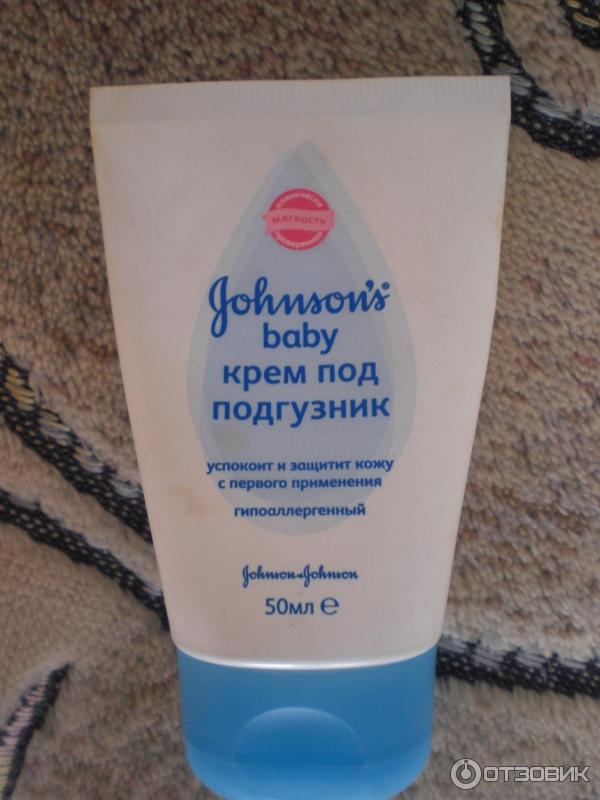 Make sure there are no feces in “hidden” places such as the skin folds of the legs or under the scrotum.
Make sure there are no feces in “hidden” places such as the skin folds of the legs or under the scrotum.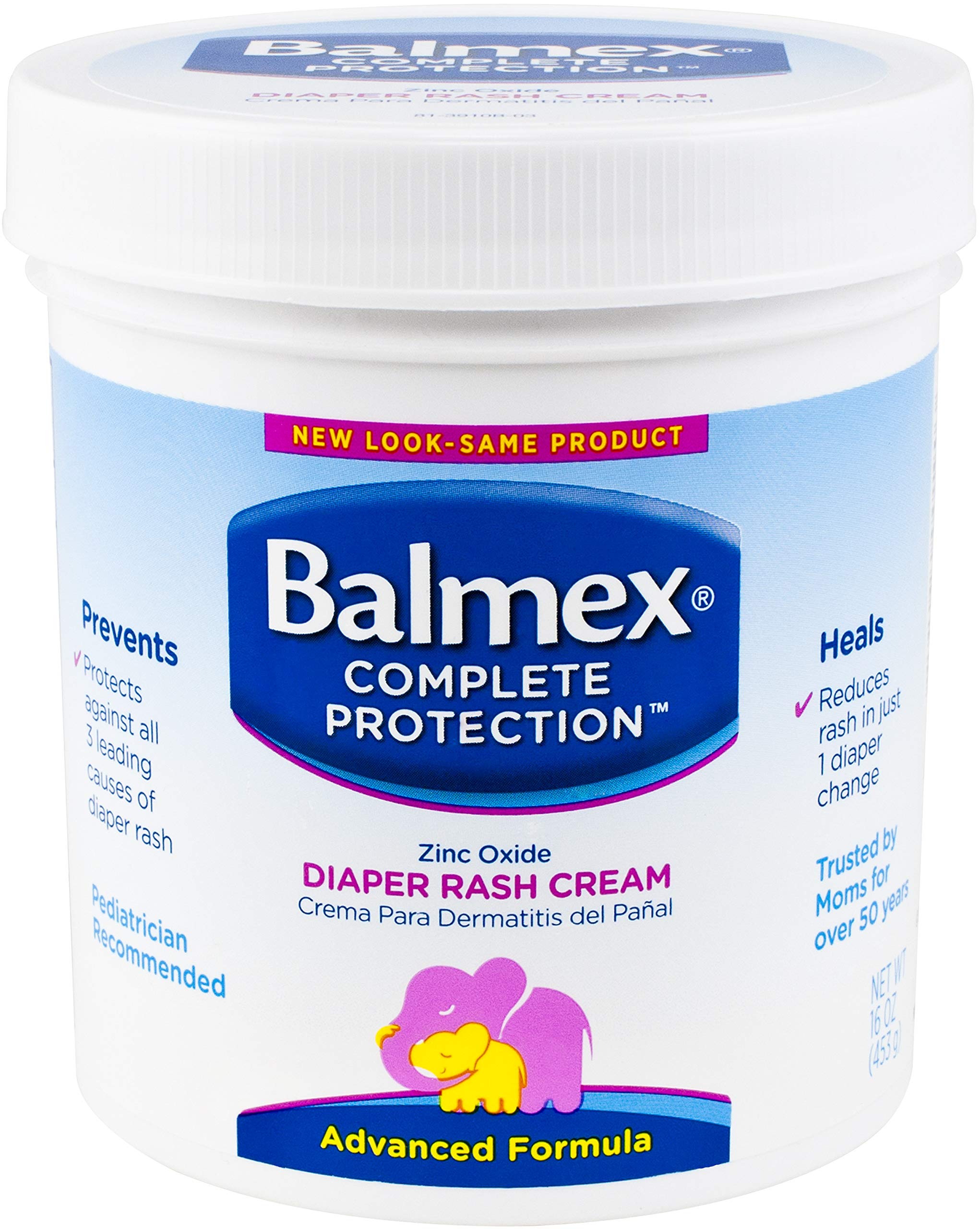

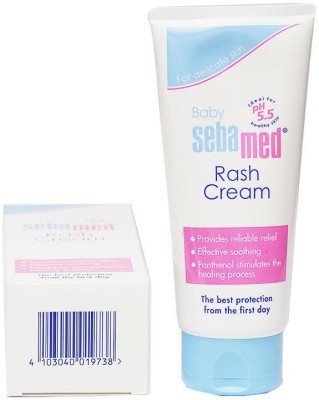 This will help soothe any soreness.
This will help soothe any soreness. Ammonia is harsh on the skin and can irritate it. If you are a cloth diaper user, it is important to keep cloth diapers ammonia-free.
Ammonia is harsh on the skin and can irritate it. If you are a cloth diaper user, it is important to keep cloth diapers ammonia-free. If your child is repeatedly getting diaper rashes, you may need to switch to a dye-free or natural diaper for sensitive skin, or consider switching to cloth.
If your child is repeatedly getting diaper rashes, you may need to switch to a dye-free or natural diaper for sensitive skin, or consider switching to cloth. Yeast loves warm, moist environments — i.e., your baby’s diaper. Yeast infections need to be treated with an antifungal product, often on prescription (2).
Yeast loves warm, moist environments — i.e., your baby’s diaper. Yeast infections need to be treated with an antifungal product, often on prescription (2).